2025 Holy Week Guatemala dates: Sun, Apr 13, 2025 – Sat, Apr 19, 2025
It’s no secret to those who know me, that I usually don’t travel during peak season to avoid the tourist crowds, higher prices, sold-out accommodations etc. But as soon as I heard about the Easter Celebrations in Antigua Guatemala, I knew that I had an appointment to keep. Even though I am not particularly religious (let alone the fact I didn’t grow up with Christian traditions), chasing the alfombras of Semana Santa and the Easter Processions was one of the coolest and most unique activities of my trip to Central America.
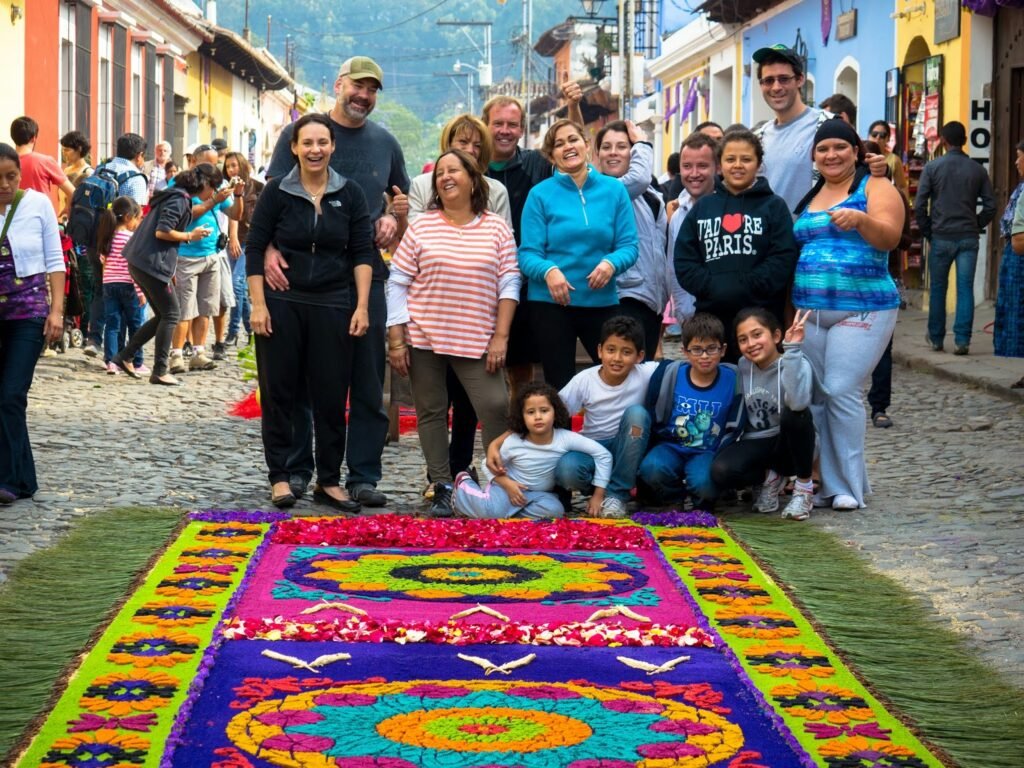
Semana Santa (Holy Week) in Guatemala
What are Alfombras of Semana Santa?
Alfombras of Semana Santa are beautiful, amazingly detailed, colorful carpets made out of sawdust, flowers, vegetables, grass, nuts, eggs, and other natural goods. The local families spend all night creating these temporary works of street art, whose fate in a finished state is to adorn the cobbled streets for mere hours or minutes. Soon after being cared for and admired by the crowds, they are sacrificed beneath the feet of the processions within seconds.
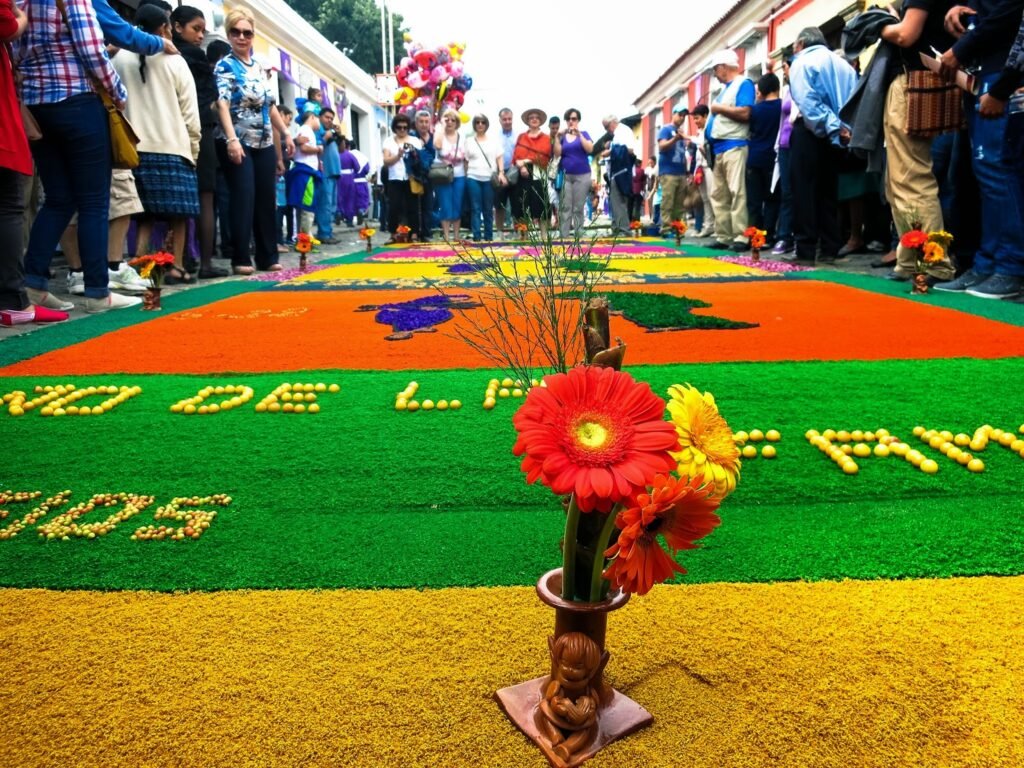
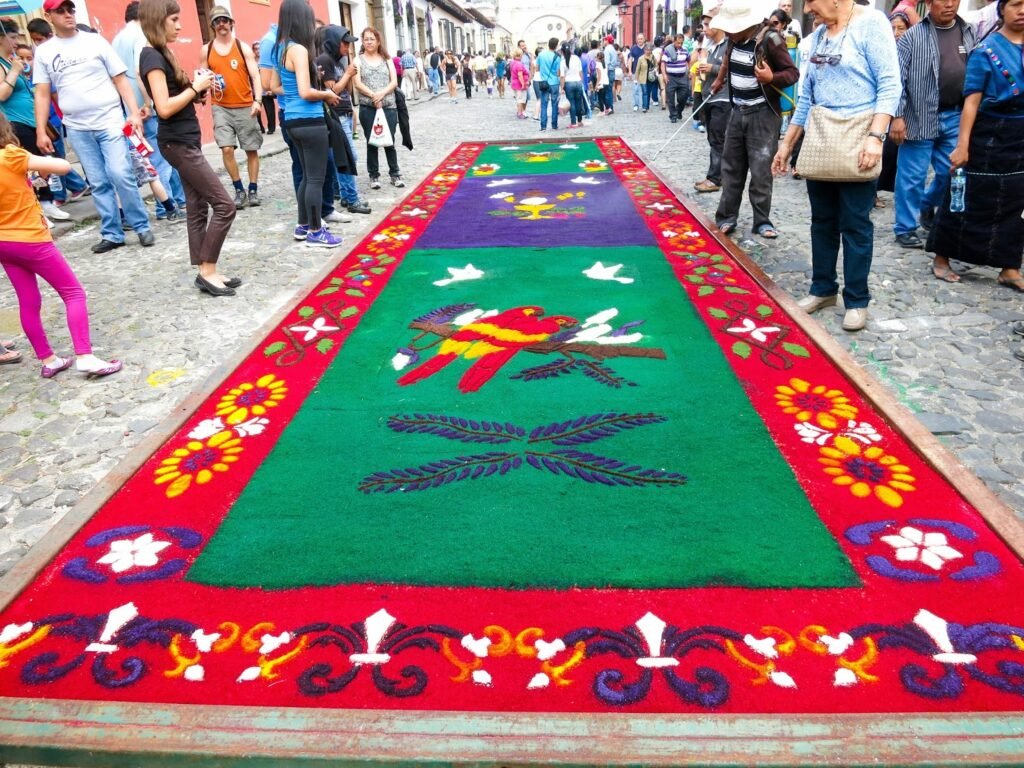
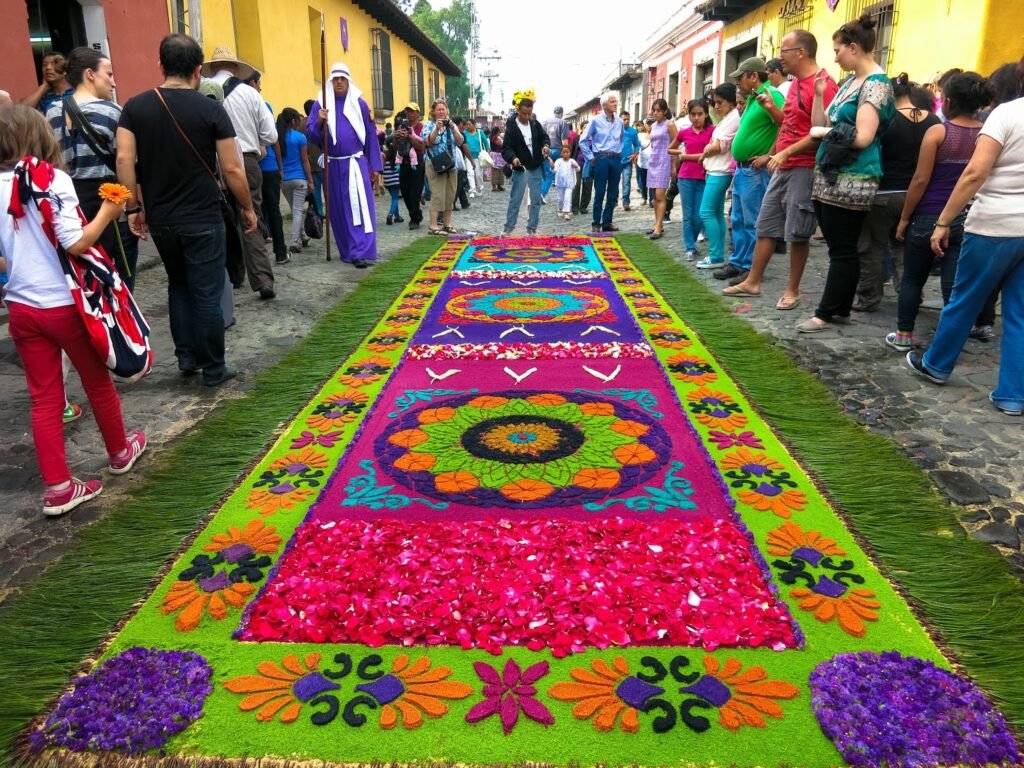

During Semana Santa (Holy Week), numerous processions march through the streets, hence new alfombras are constantly being created by the local families over the course of the week. But the big night is the Thursday before Good Friday when everyone stays up most of the night to assemble the most elaborate, fancy carpets you can imagine. This implies that Good Friday is the day with the most processions and also the greatest quantity and the most beautiful alfombras.
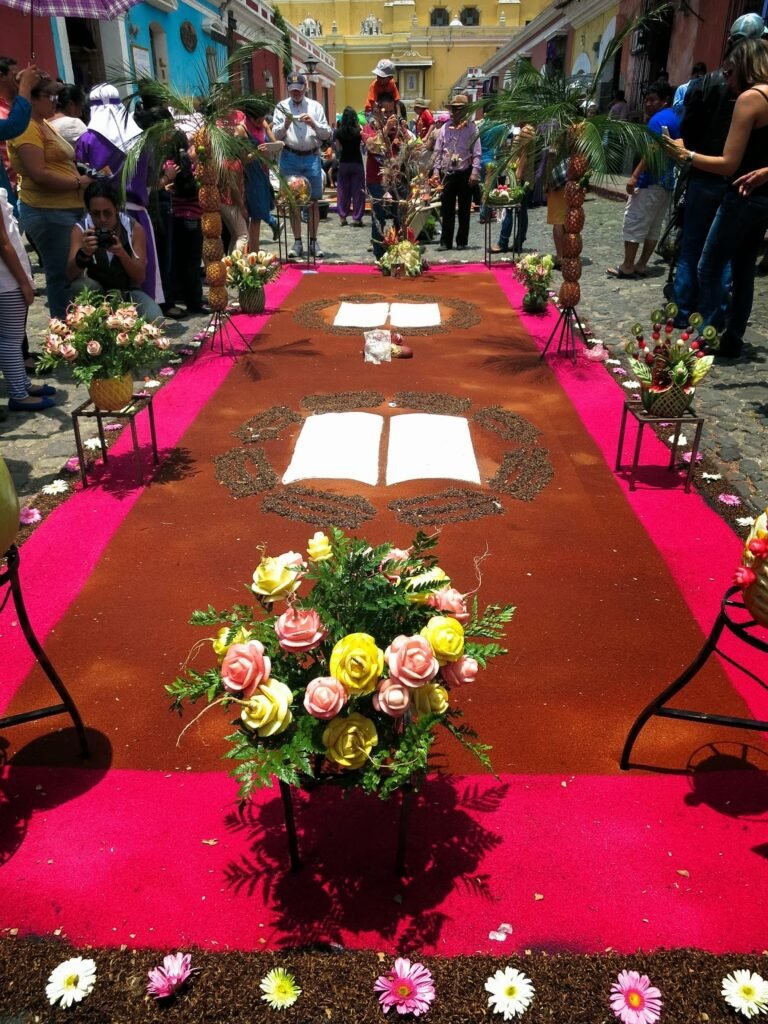
The local families race through the night to finish their creations before the processions start rolling through at 4 a.m. and destroy it all. No need to worry though: you don’t have to get up that early, as alfombras pop up throughout the day from 4 a.m. Friday morning to 4 a.m. Saturday.
I made it out by 9:30 a.m., but while I was busy tracking the alfombras on a single street, I bumped into the processions and couldn’t move anywhere, which left a feeling that I missed quite a lot (even though I saw tons, the feeling counts more!). So, it would be wise to get a leaflet with timetables beforehand, and trace the procession routes slightly ahead of the floats. This way, you can see plenty of wonderful alfombras by waking up at a normal hour.
Typical alfombra creation techniques
The alfombras are made mostly of carefully placed colored sawdust or are created from large blankets of grass or flowers if it needs to be a relatively quick one.
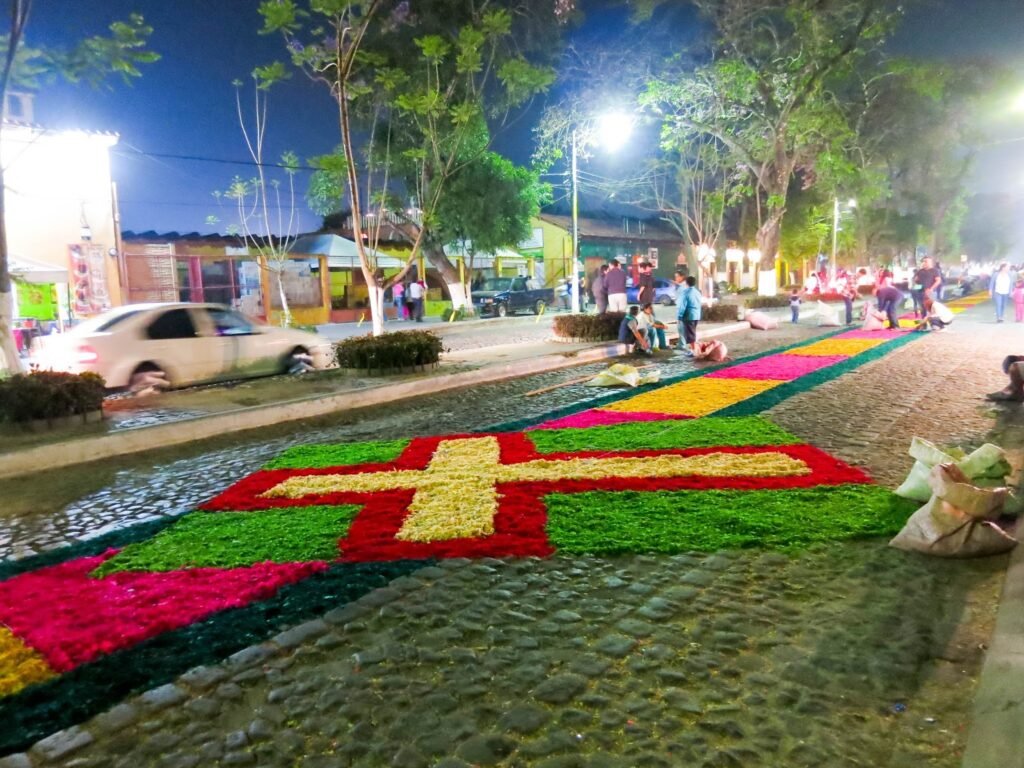
I must confess that I hadn’t had the patience to watch the entire process, but here is the summary of what I collected over time.
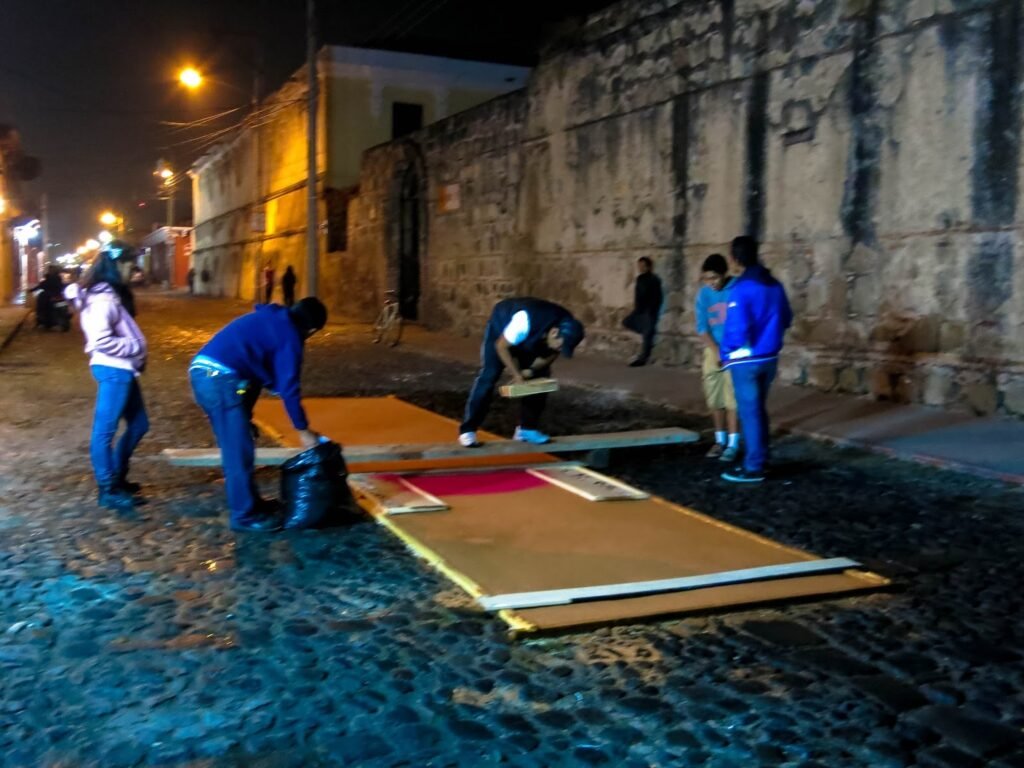
As the first step, sand is spread over the cobblestones to level them, and the creators stand on low bridges made of wood planks to increase their reach and precision.
Next, dyed sawdust in hues of all the colors of a rainbow is pressed through intricately designed cardboard stencils.

Even though stenciling is very common, some others -mostly made of flowers or grass- are also laid freely by hand.
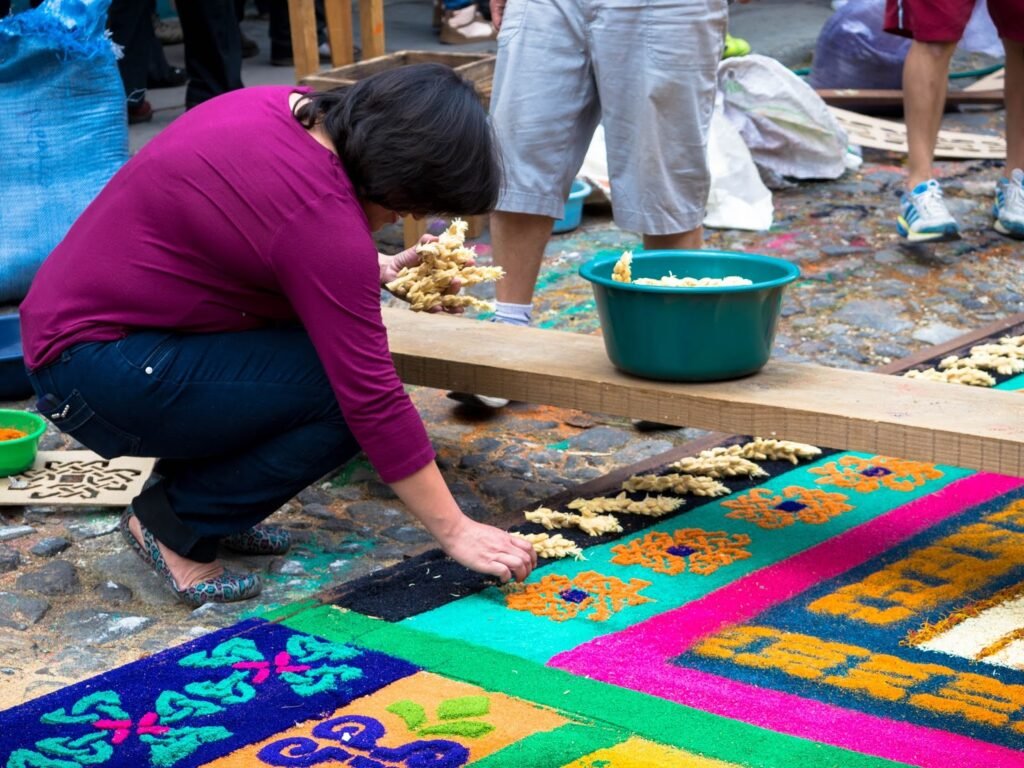
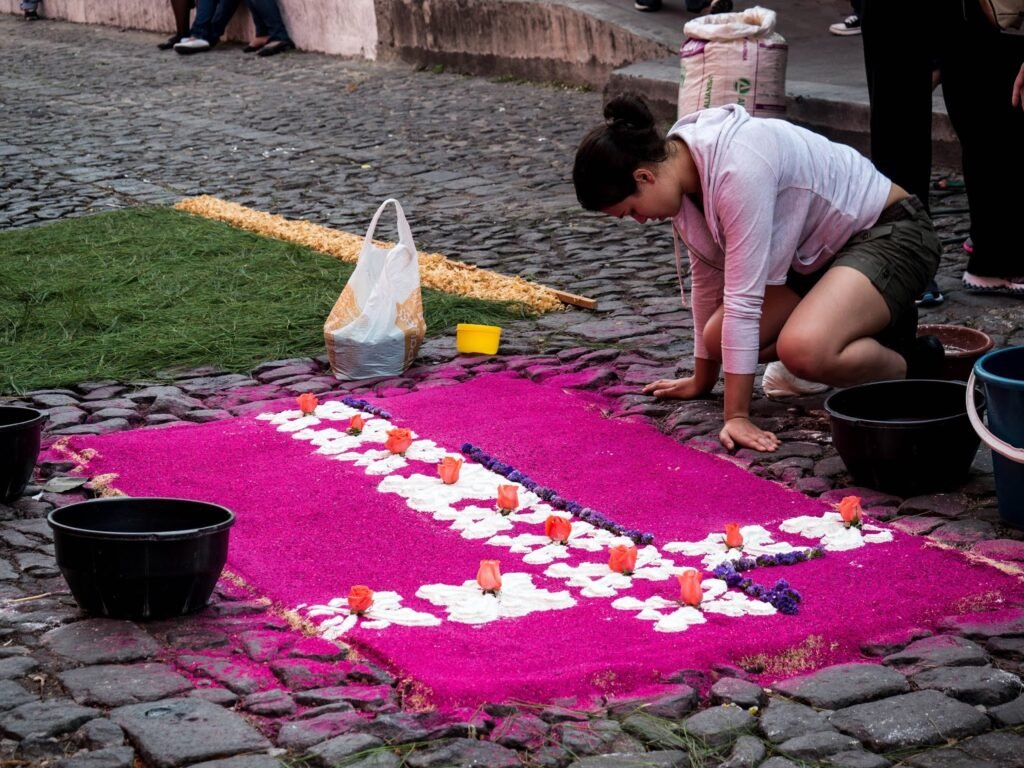
Beyond the colored flat designs, 3D elements are also incorporated.
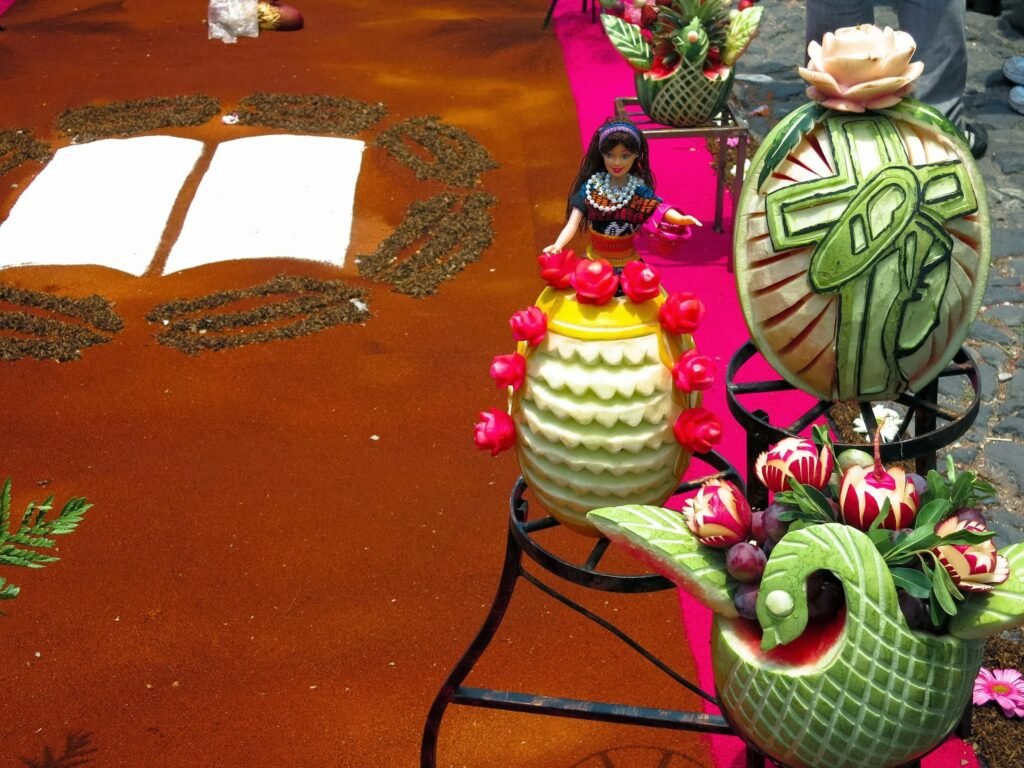
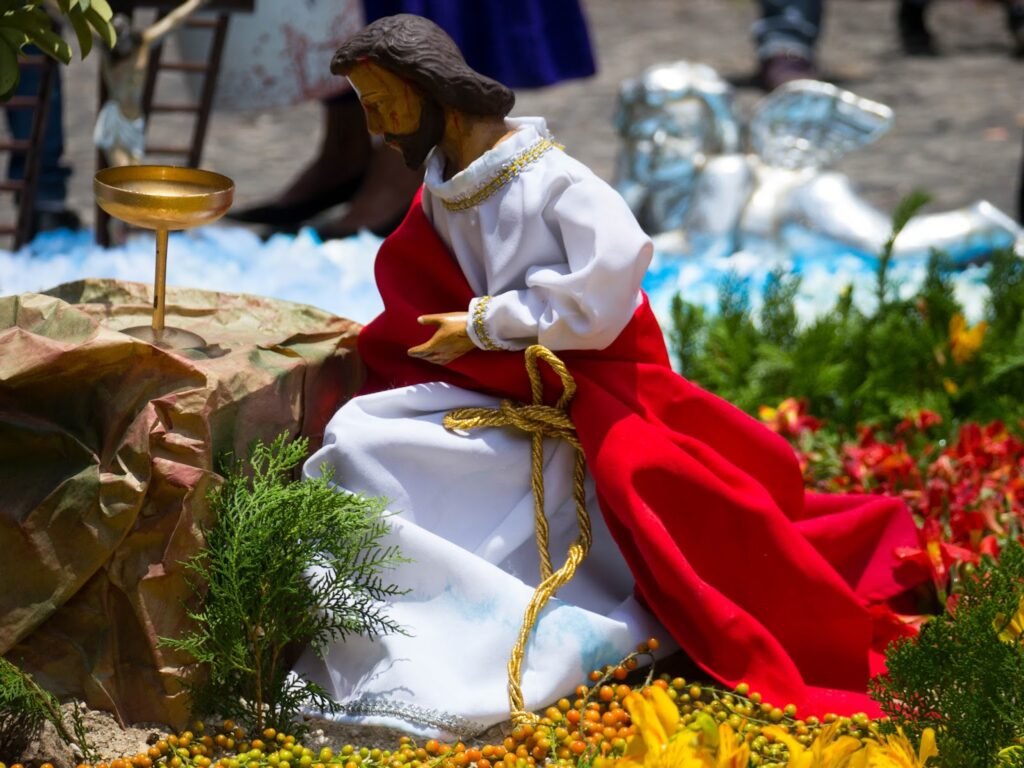
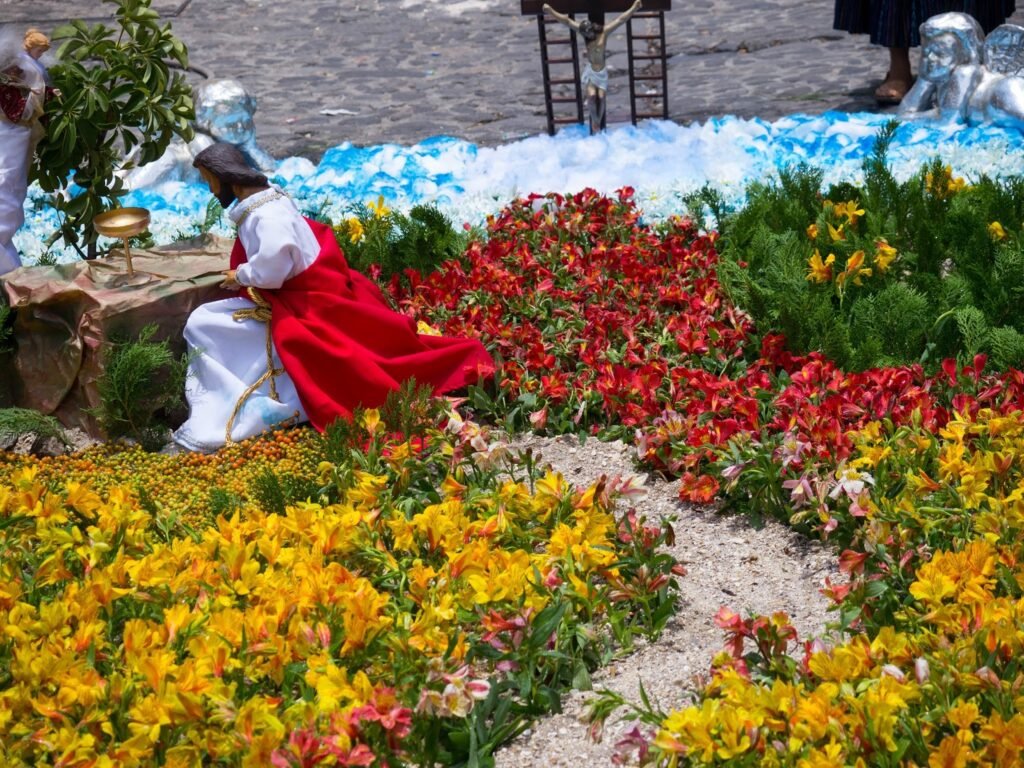
The carpets’ designs reflect biblical symbols, Mayan traditions, and scenes from nature.

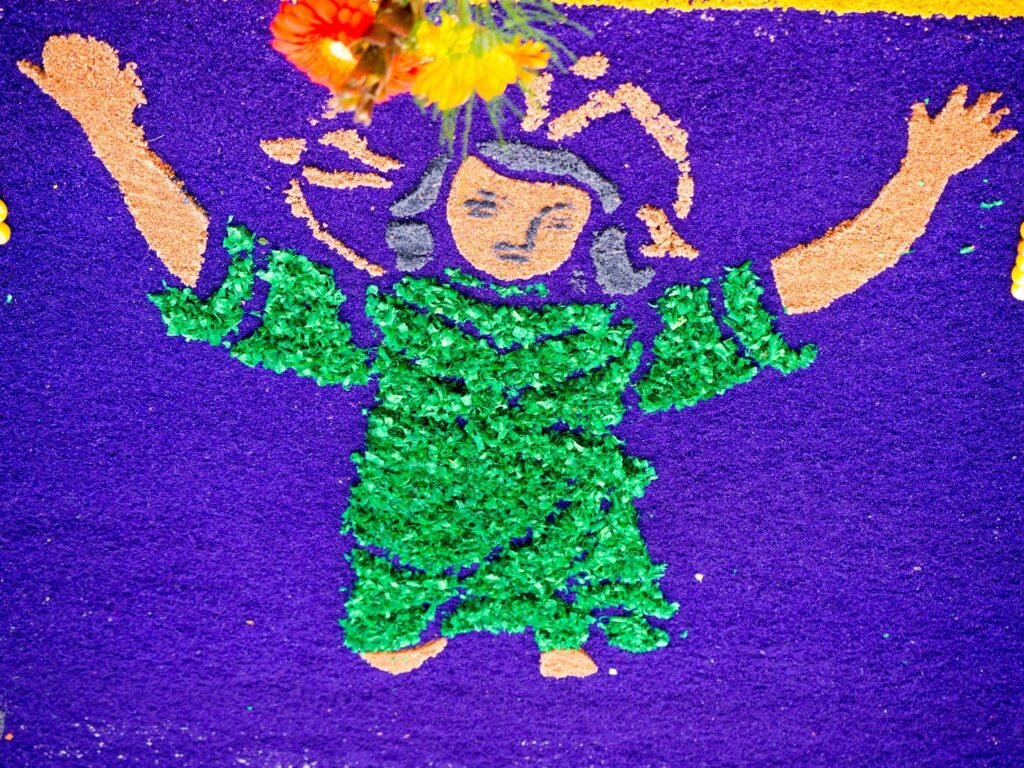
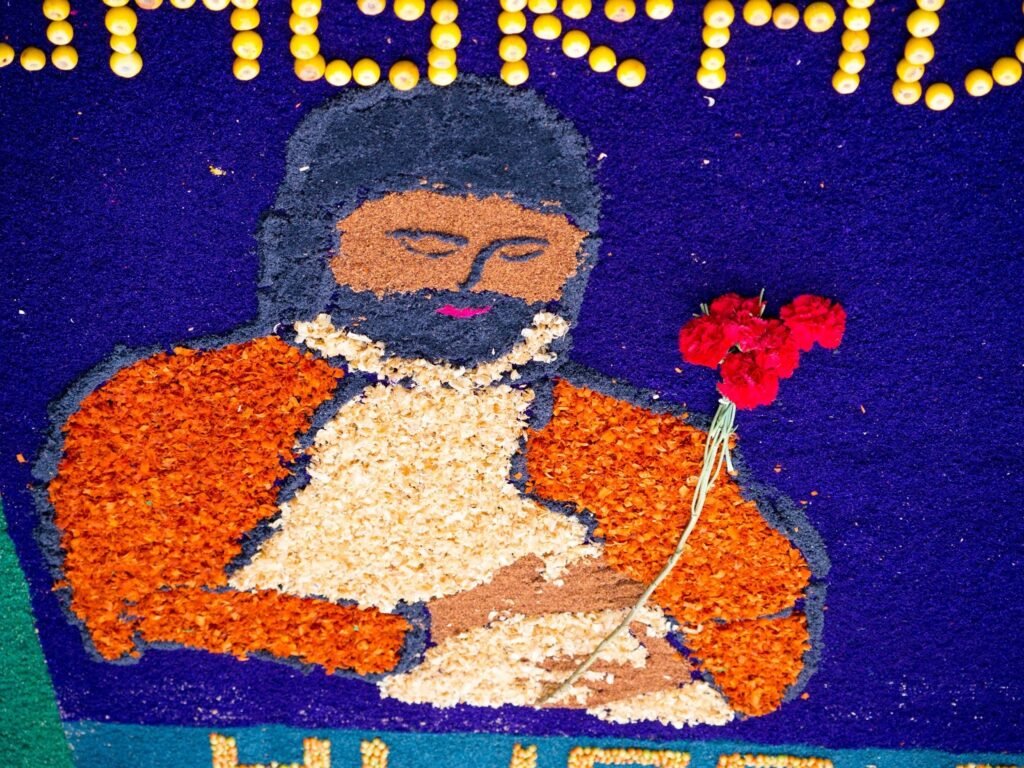
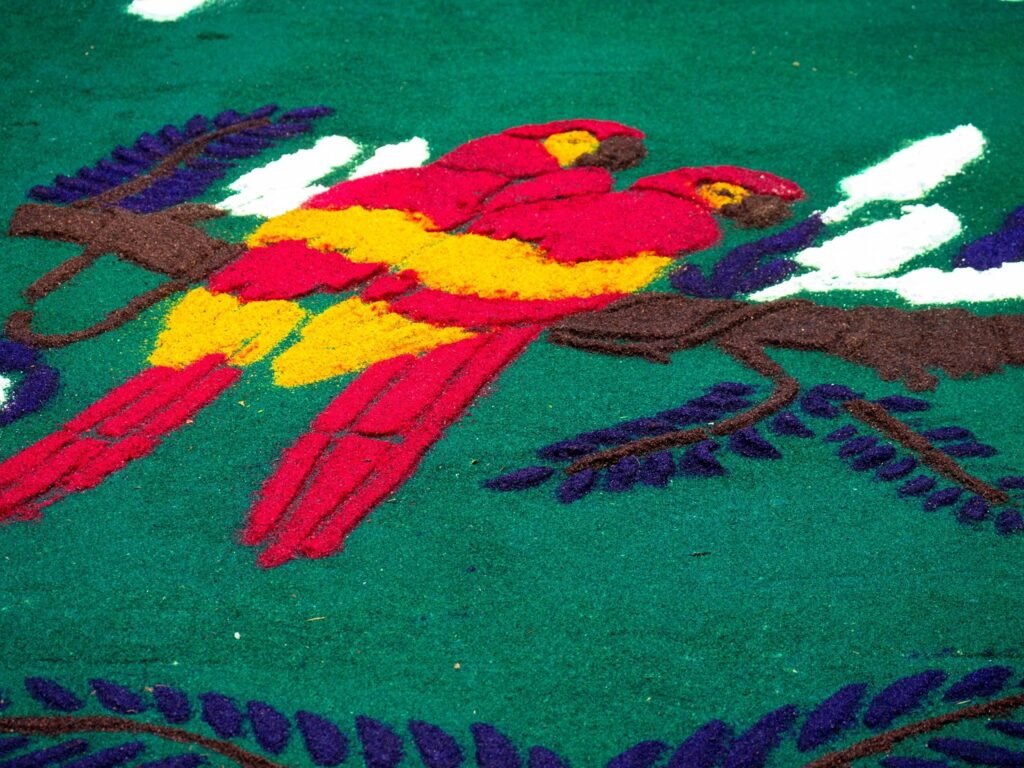
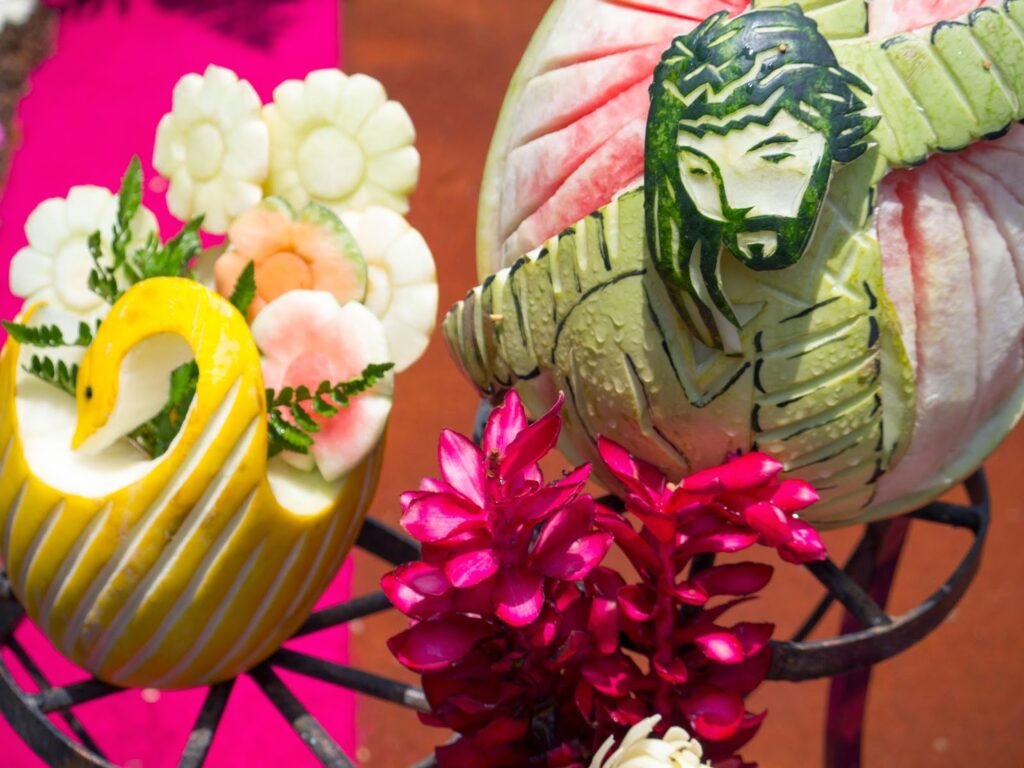

Flowers, seeds, plants, vegetables, eggs, and pine needles add the final touches to these temporary works of art. The amount of detail, people manage to coax from all these materials to create the elaborate offerings is incredibly amazing.
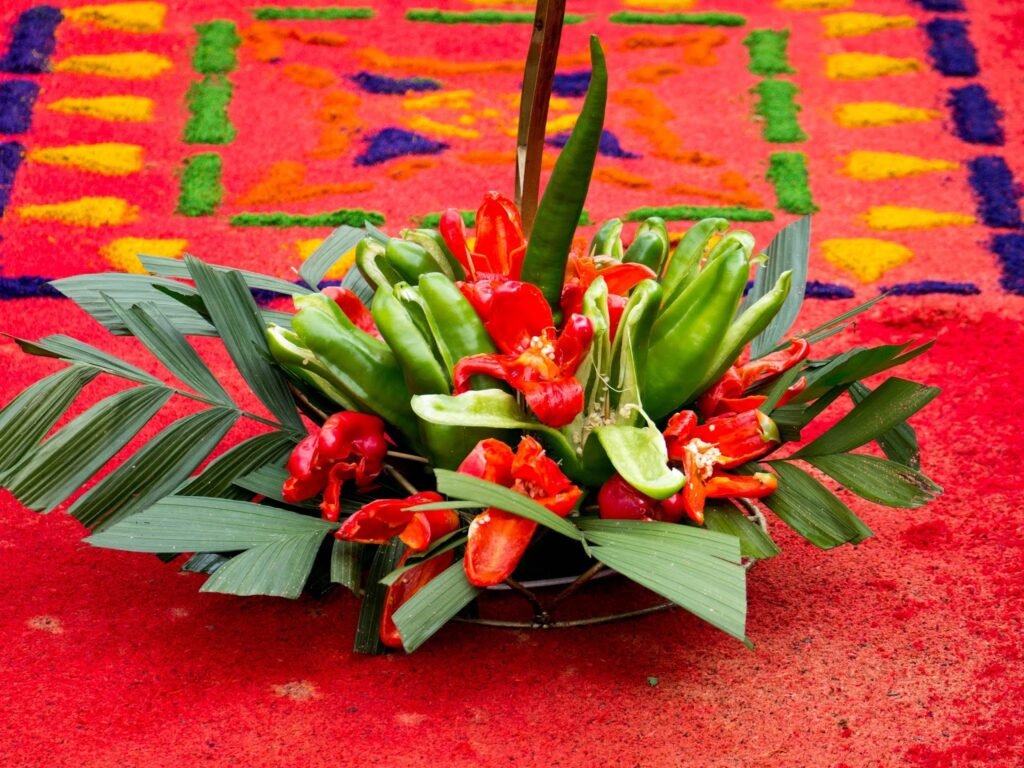
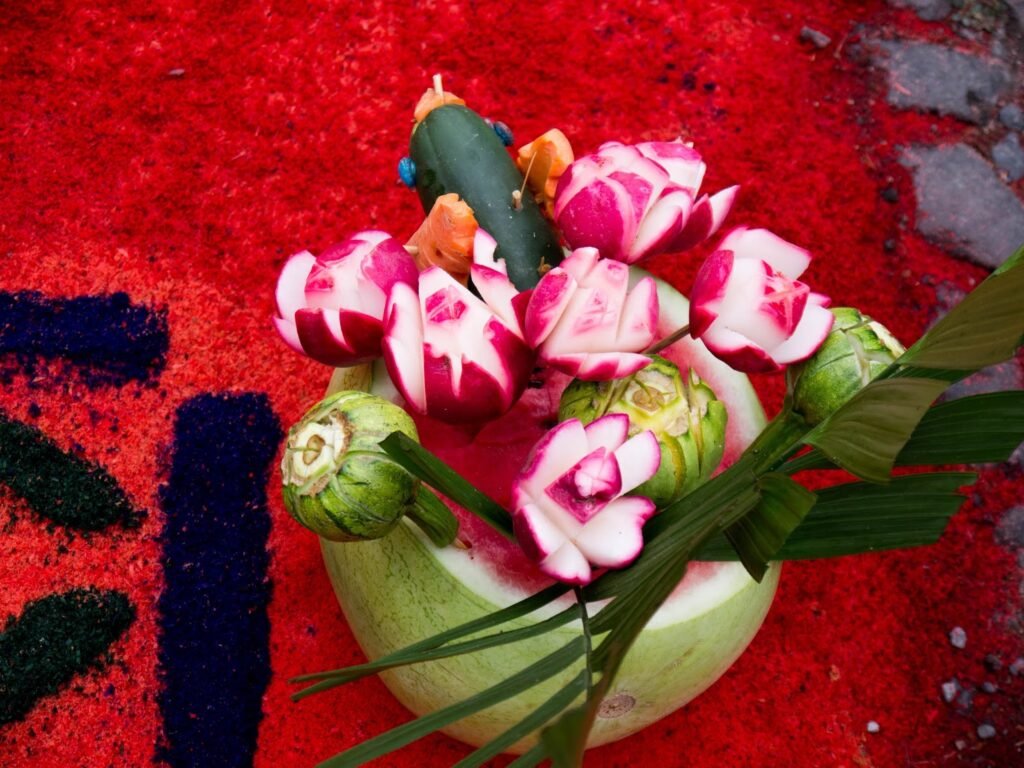
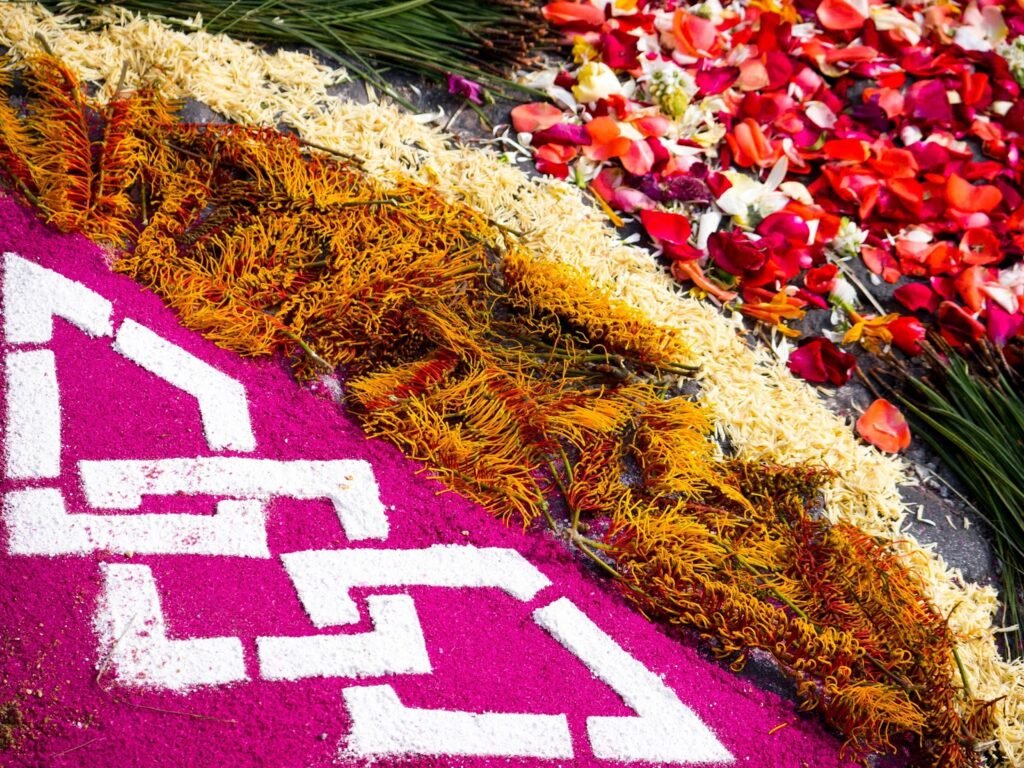
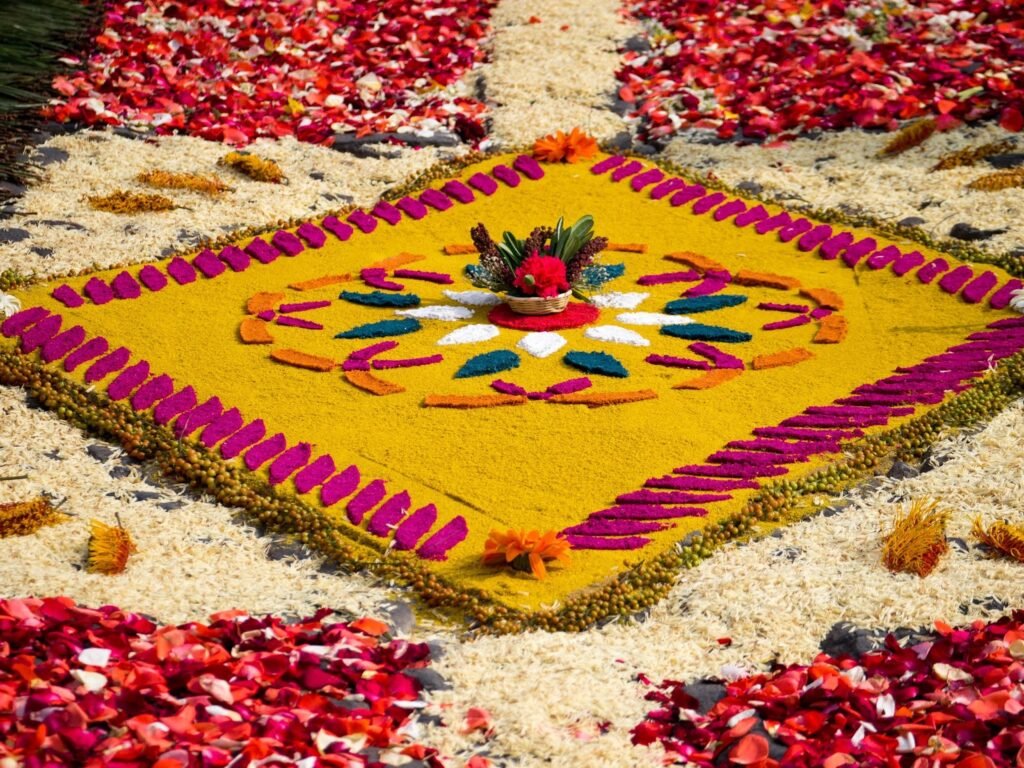
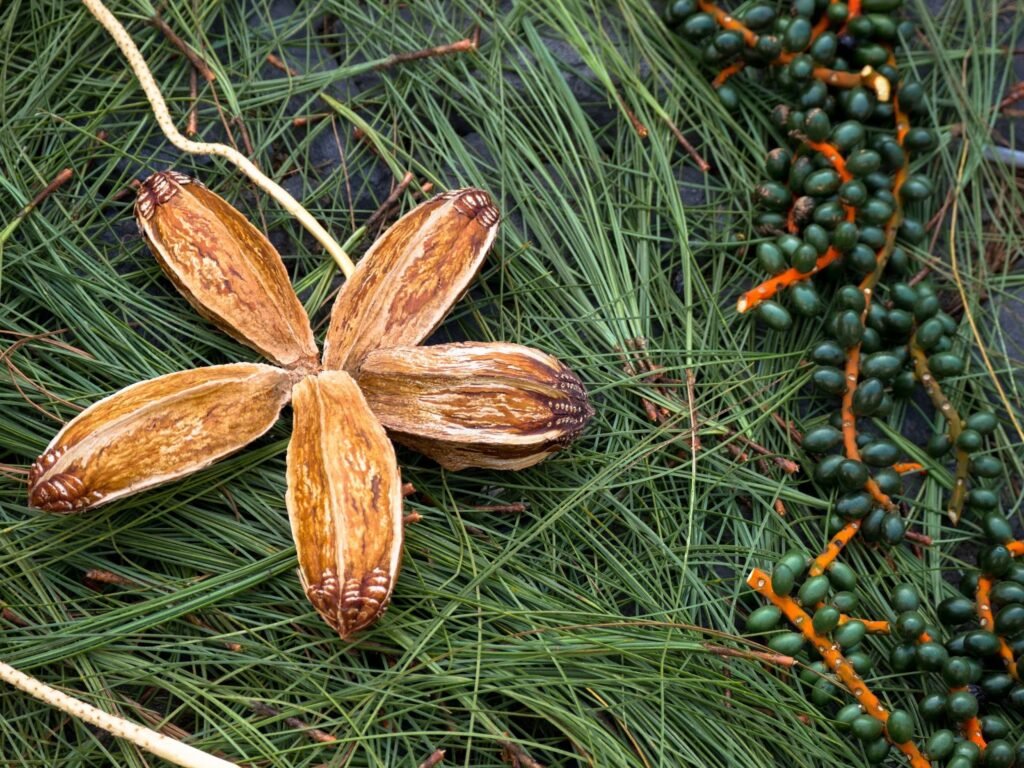
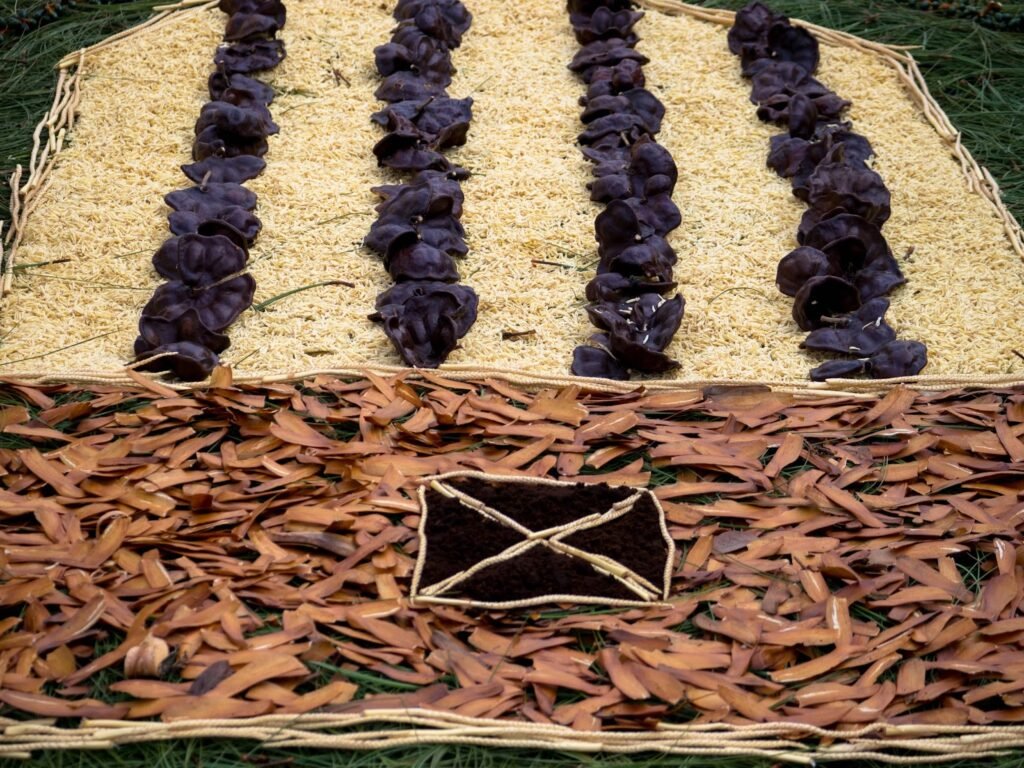
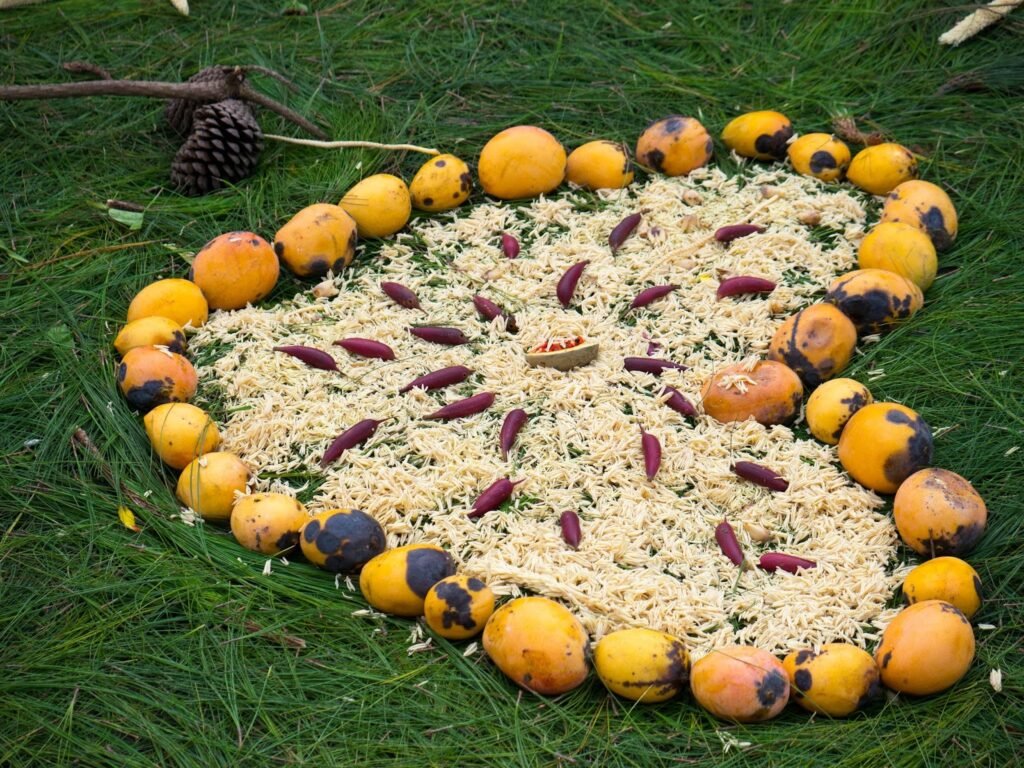
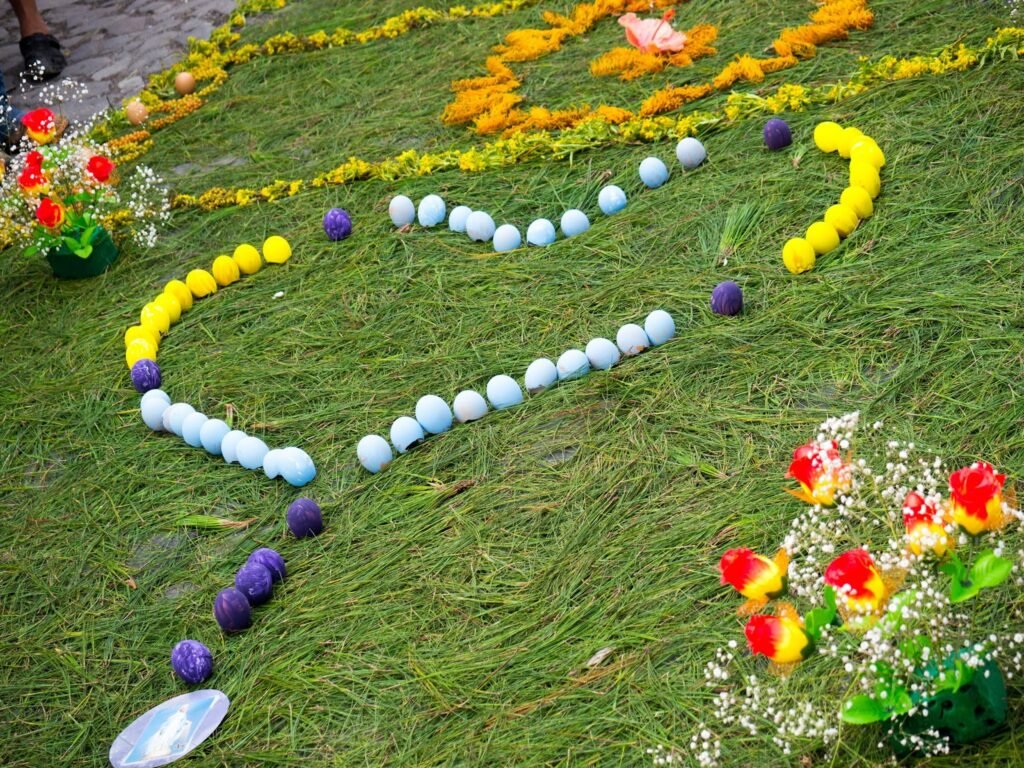
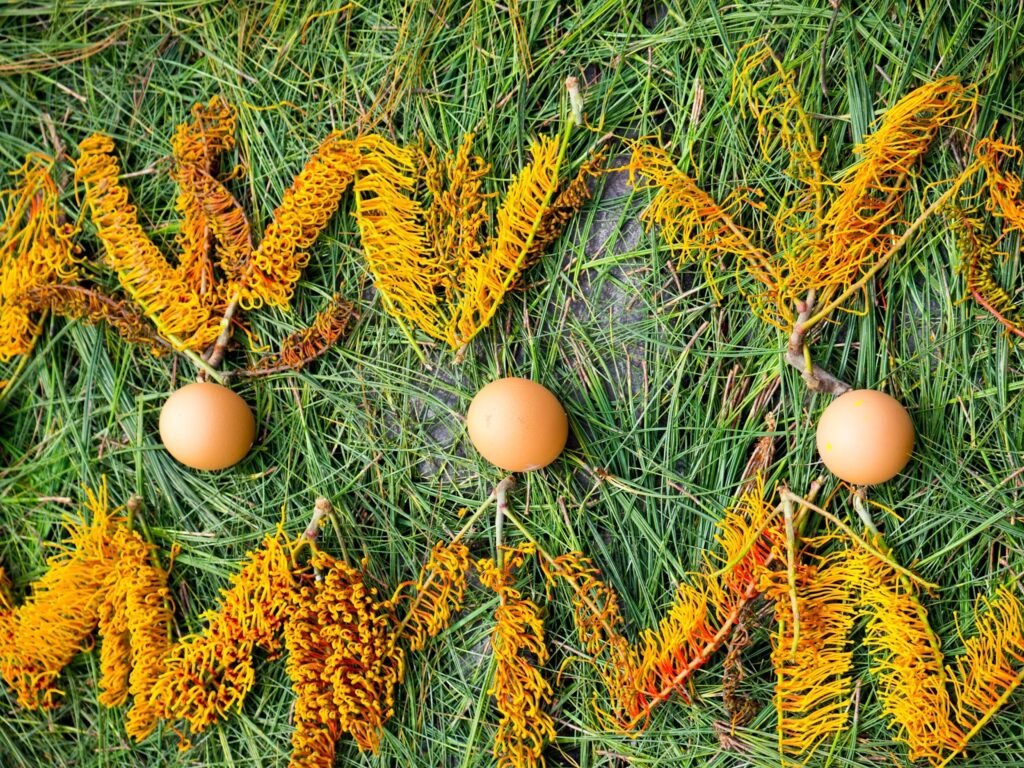
Finally, the alfombras are periodically finely sprayed with water to keep all pieces in place until the wave of humanity carrying massive platforms with statues of Christ and the Virgin Mary arrives.
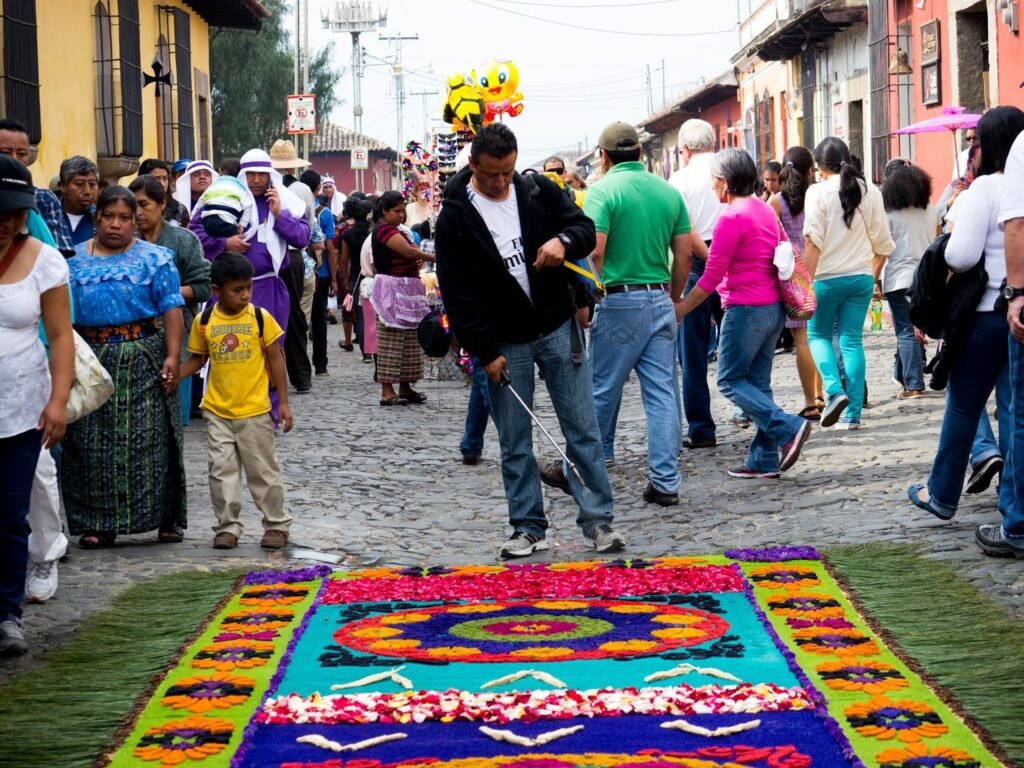
The inevitable destiny of Alfombras: The Holy Week Processions
Soon procession marchers and heavy floats (anda) trample the once-beautiful alfombras, leaving only a rainbow confetti of flowers and sawdust. More than one procession usually passes over them, as they weave their way through the city.
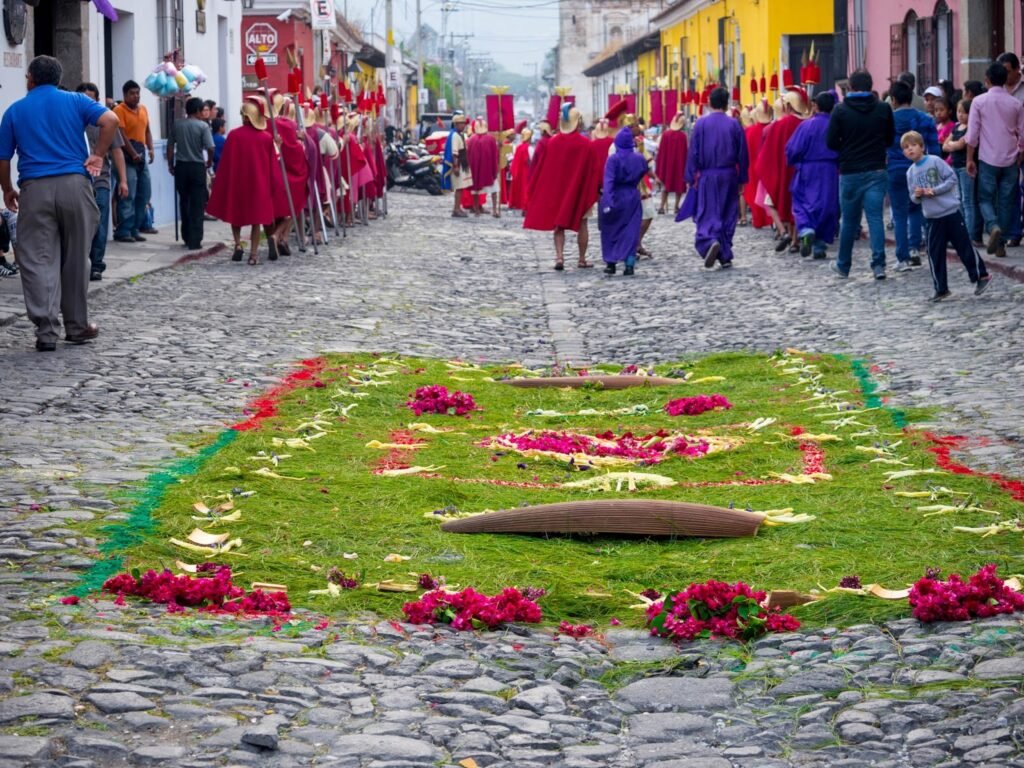
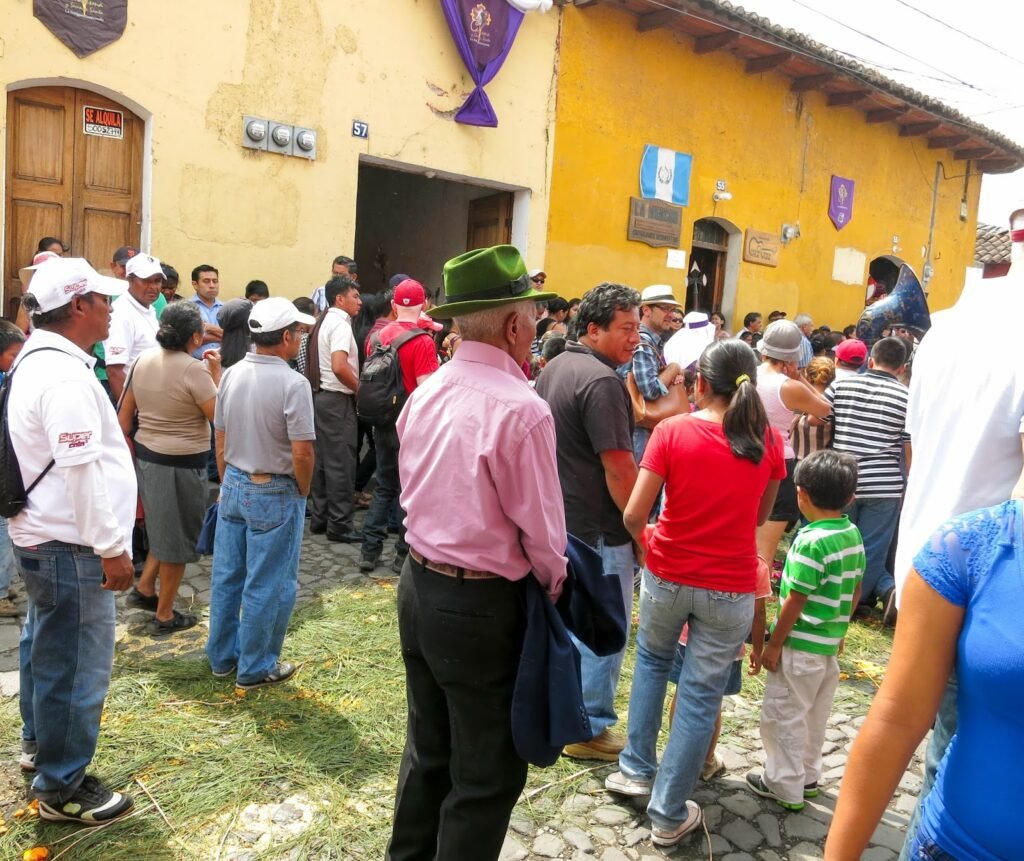
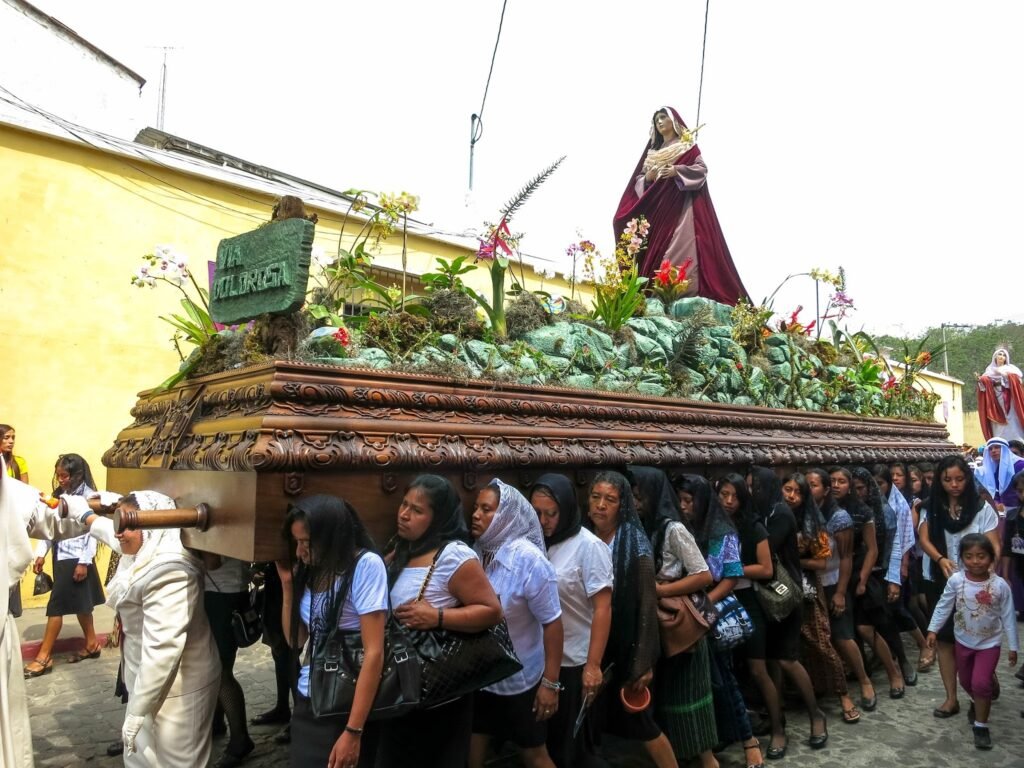
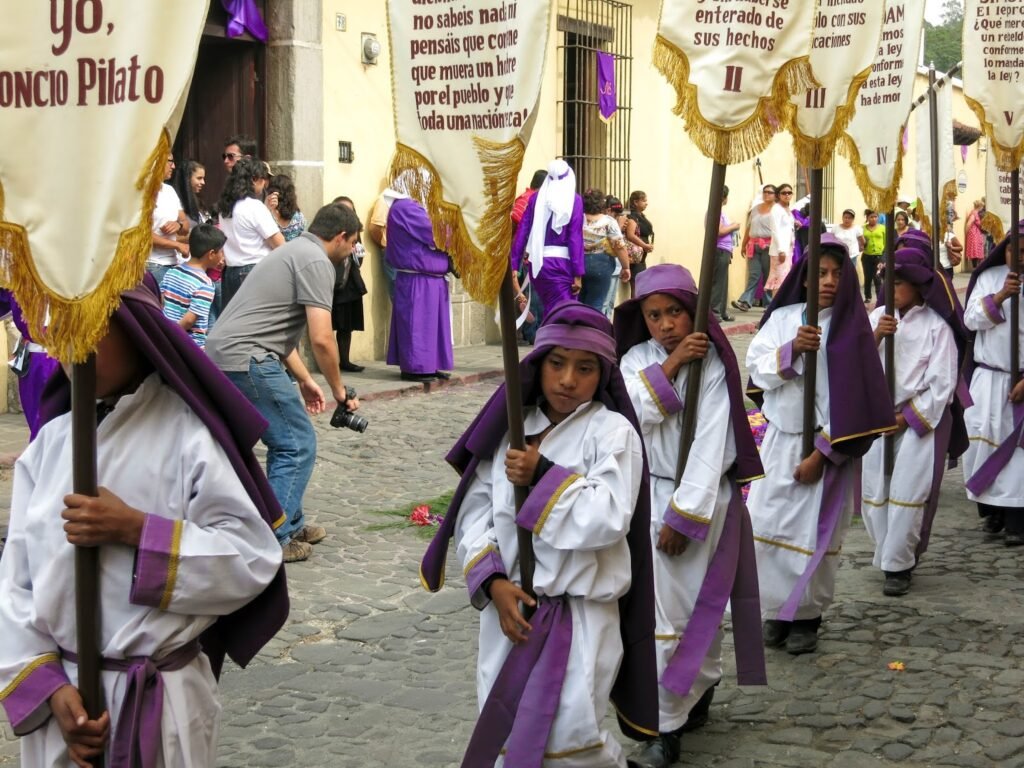
A band follows close behind the purple-robed carriers and thousands of pilgrims, families, and tourists trail along. As they slowly move forward, the brass and percussion band plays a piece of dark mournful music. By now, all your senses must have been shaken by the grand and grave atmosphere.
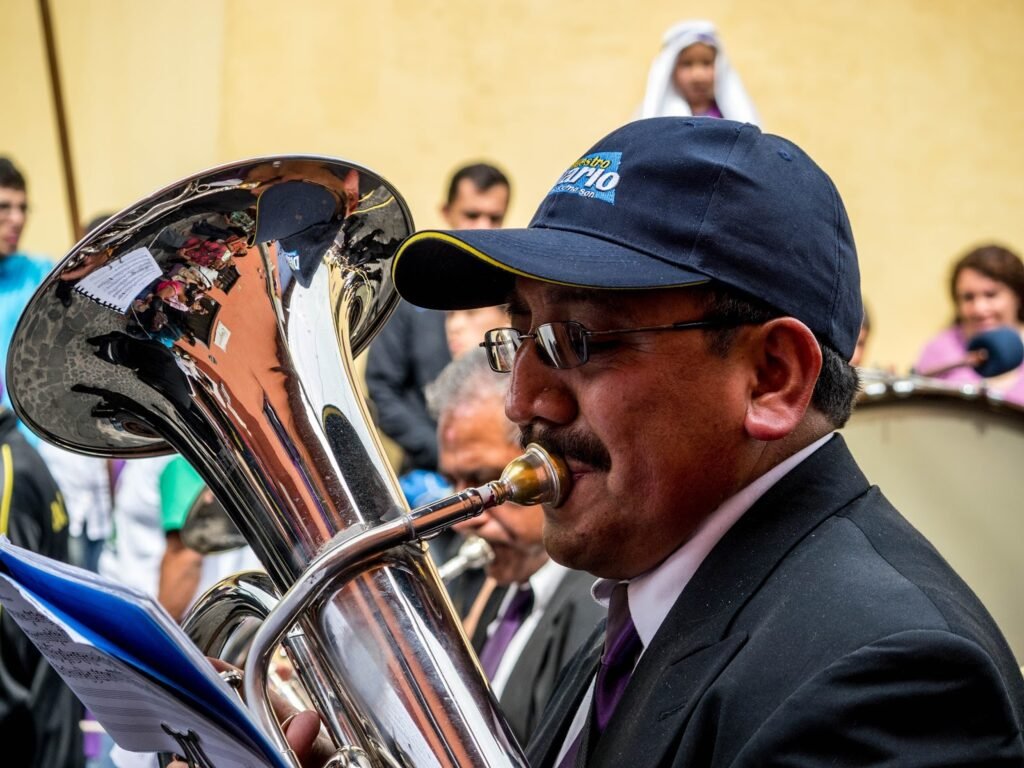
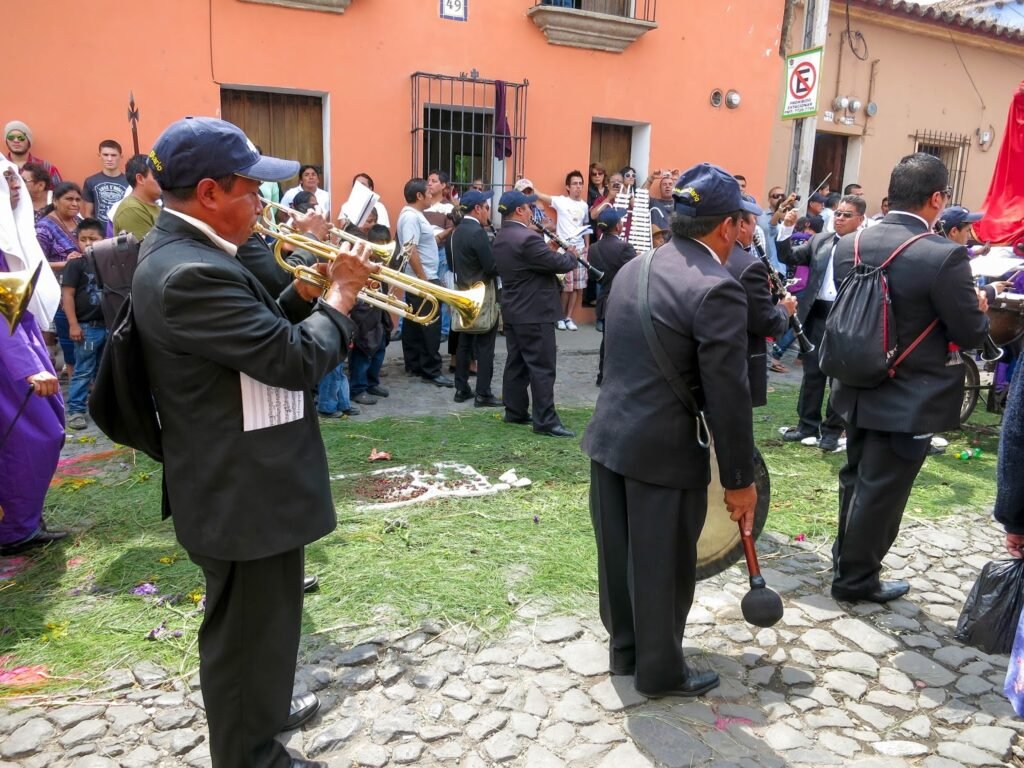


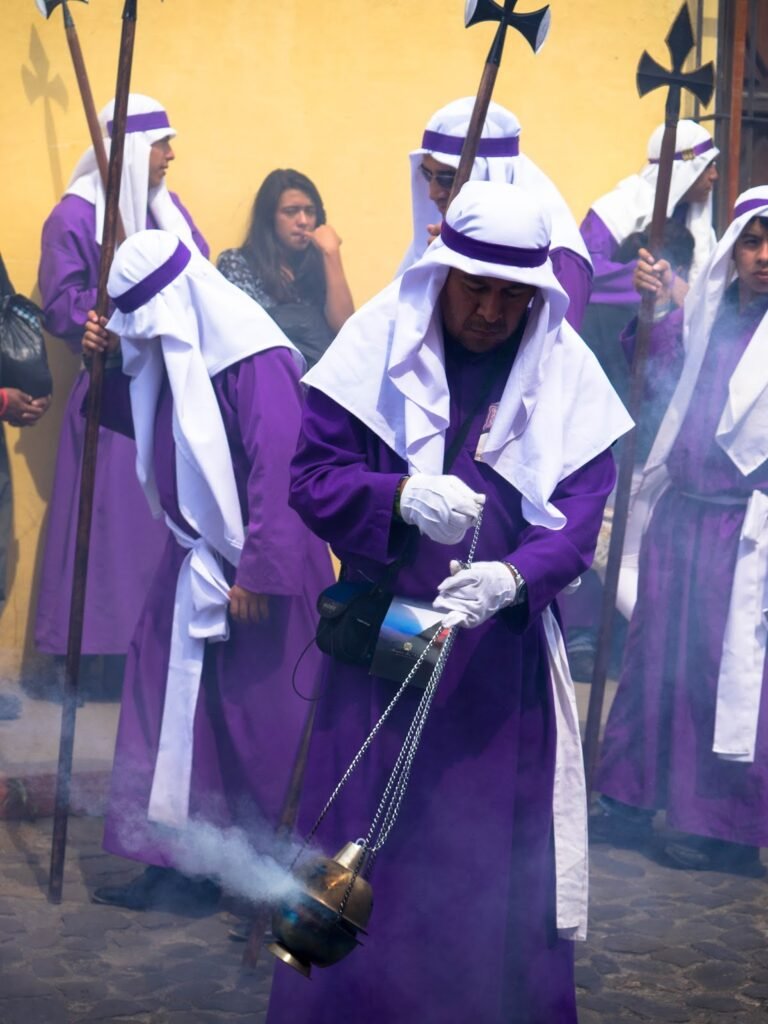
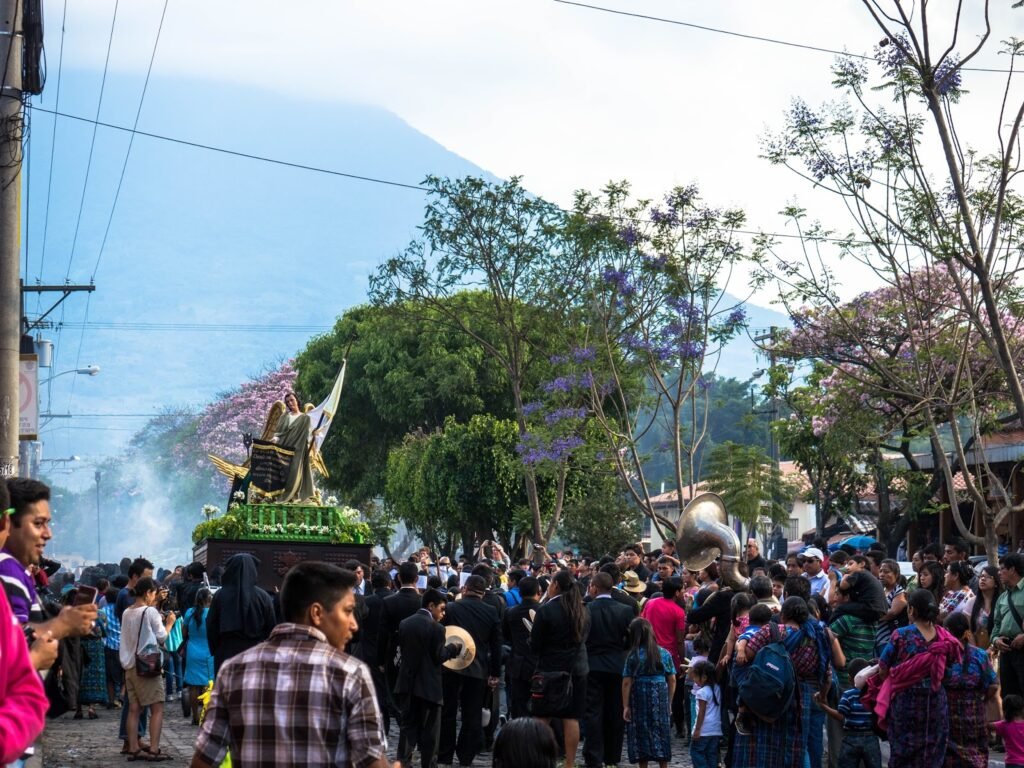
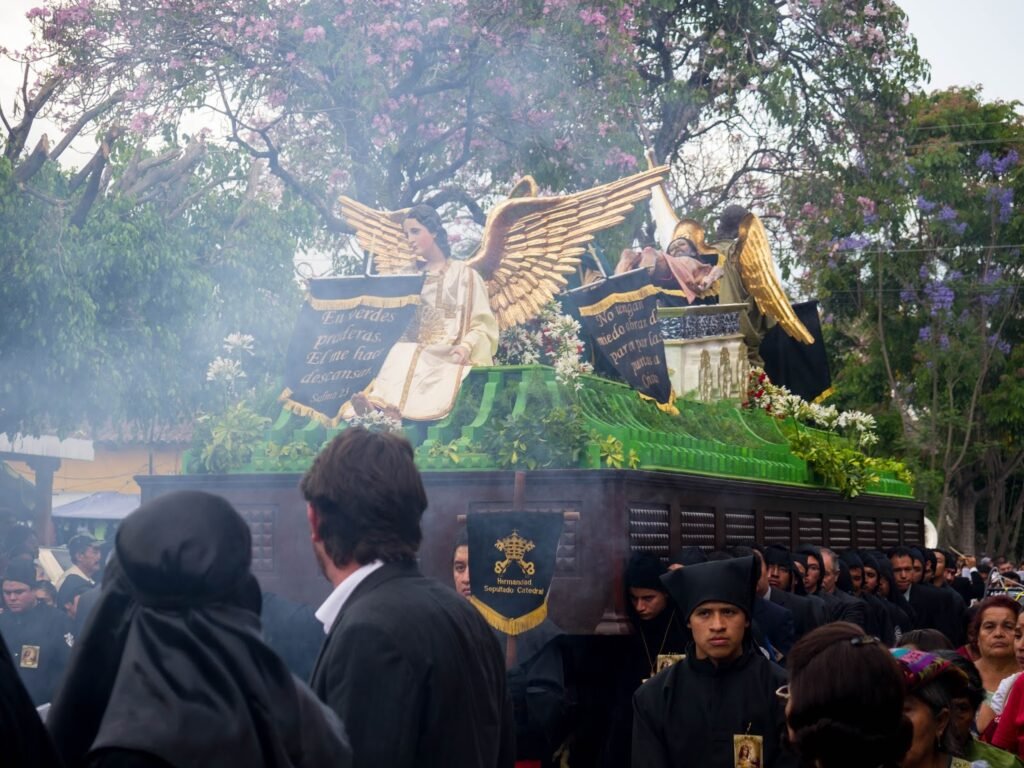
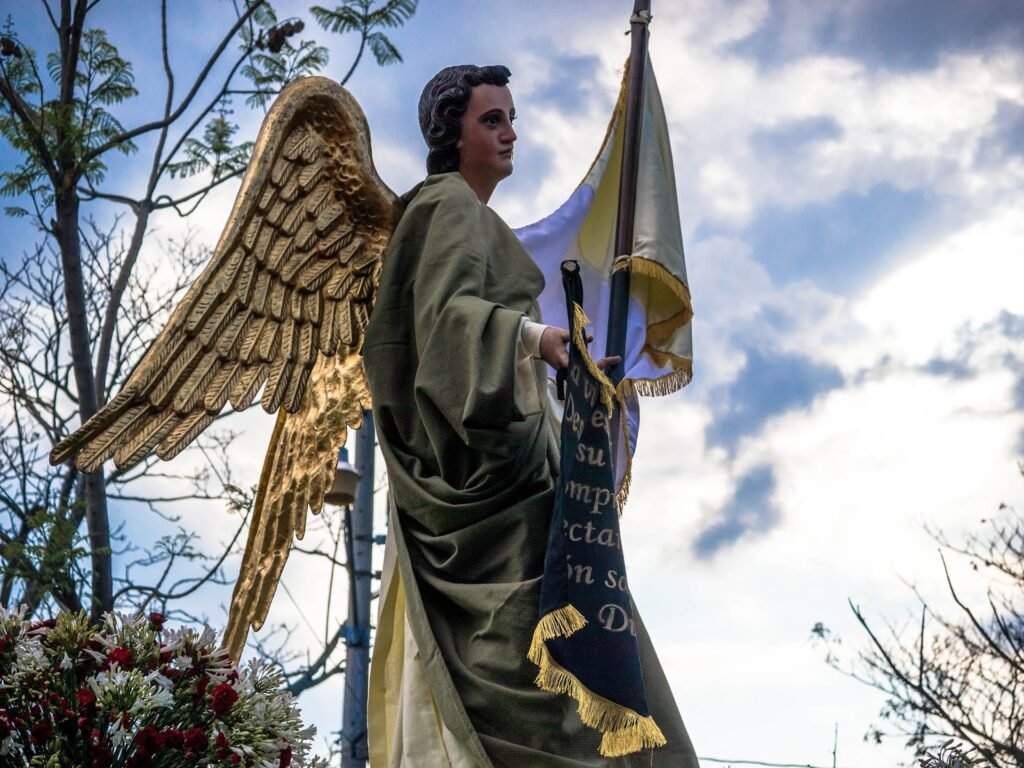
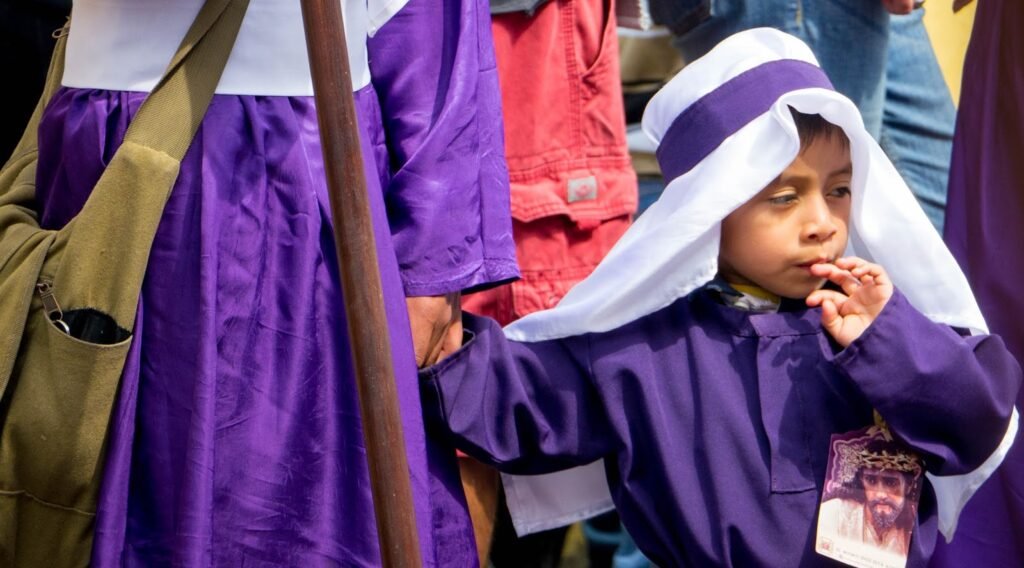
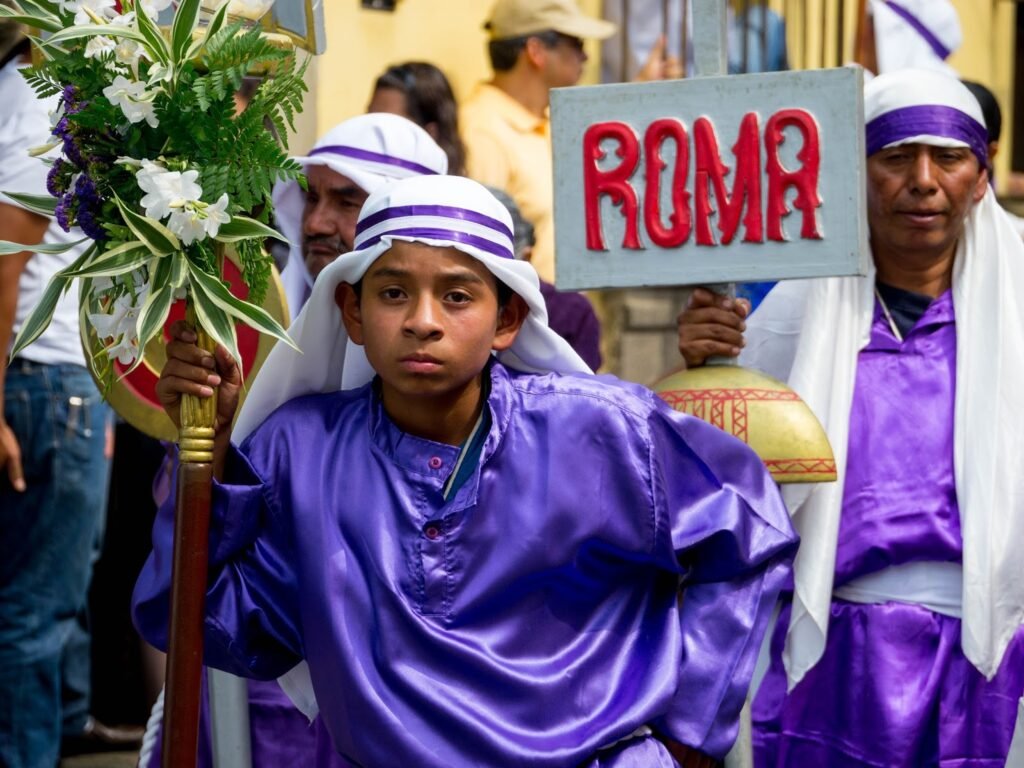
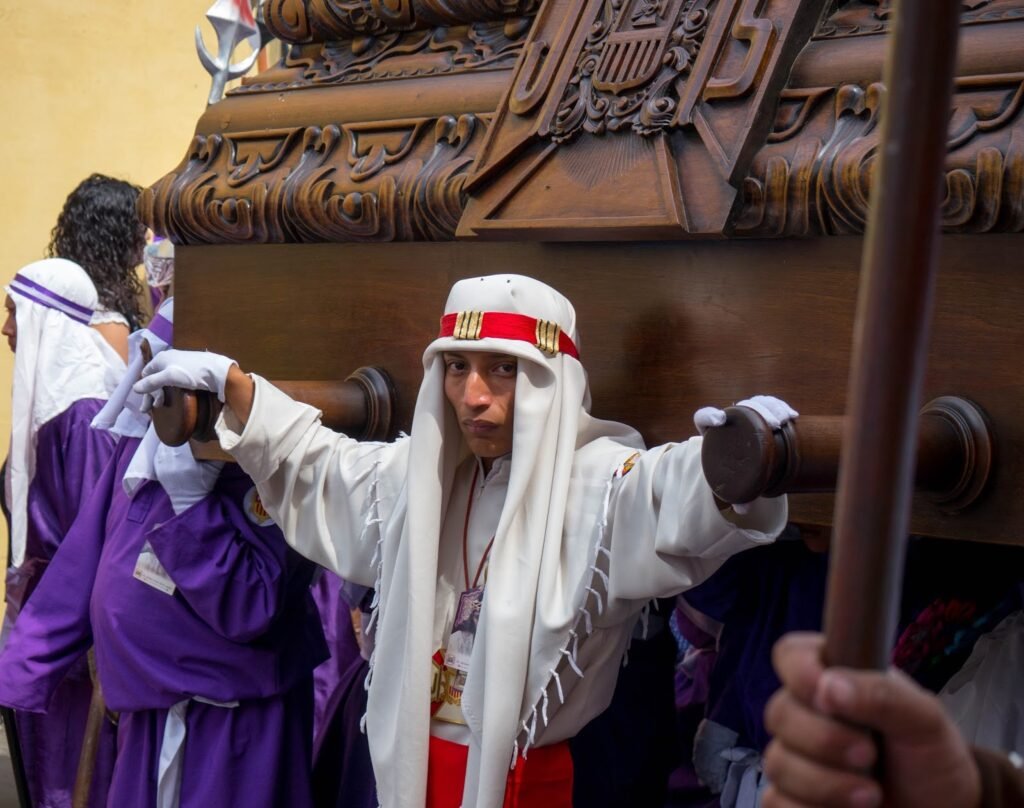
Reflections of the End
And after they have all passed by, a small cleanup crew immediately sweeps up the remains and shovels them into a small the bulldozer that follows the procession.
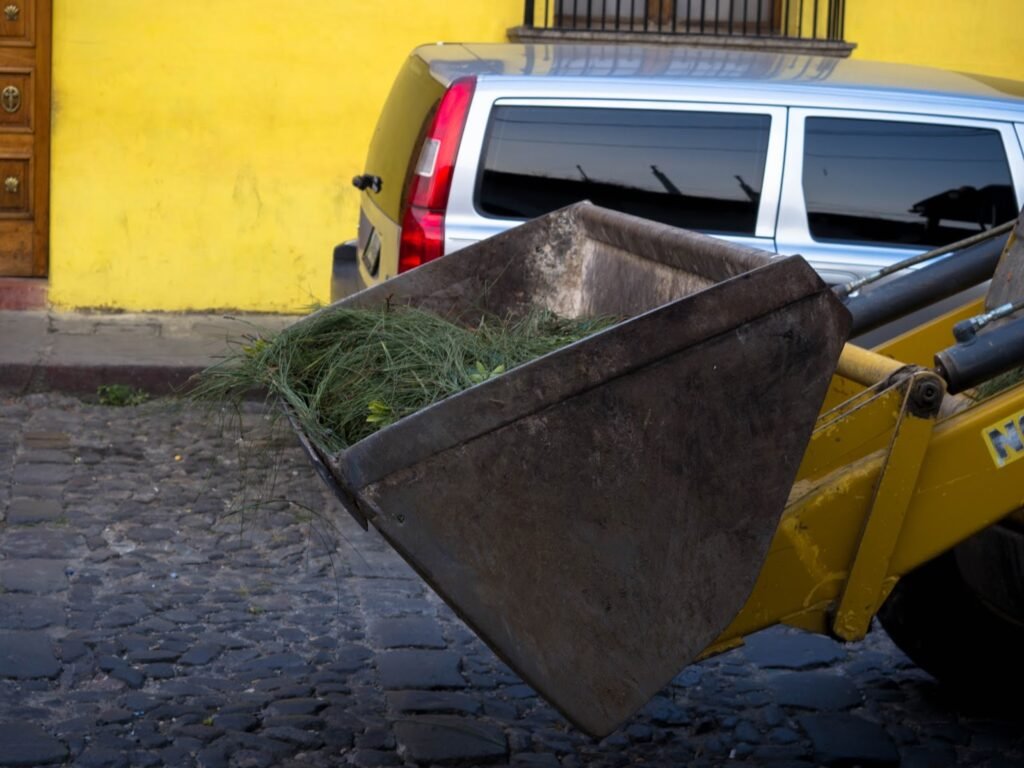
Within moments, the cobblestones are clean with only a few splashes of colorful dye reminding us that something beautiful and mysterious happened here.
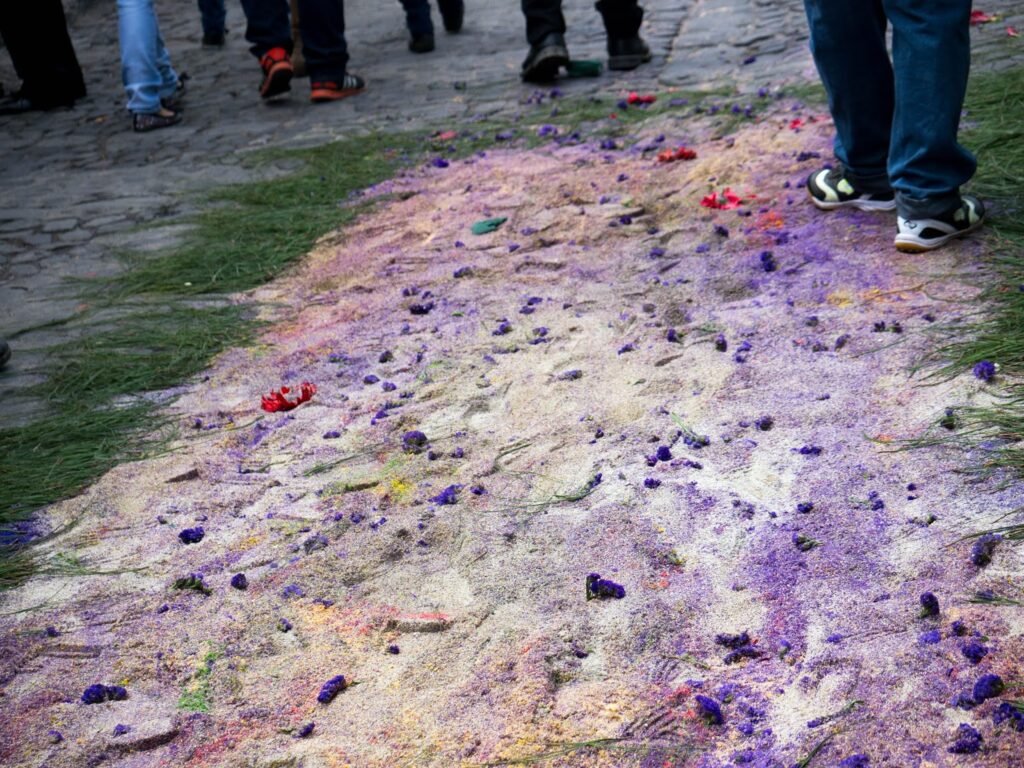
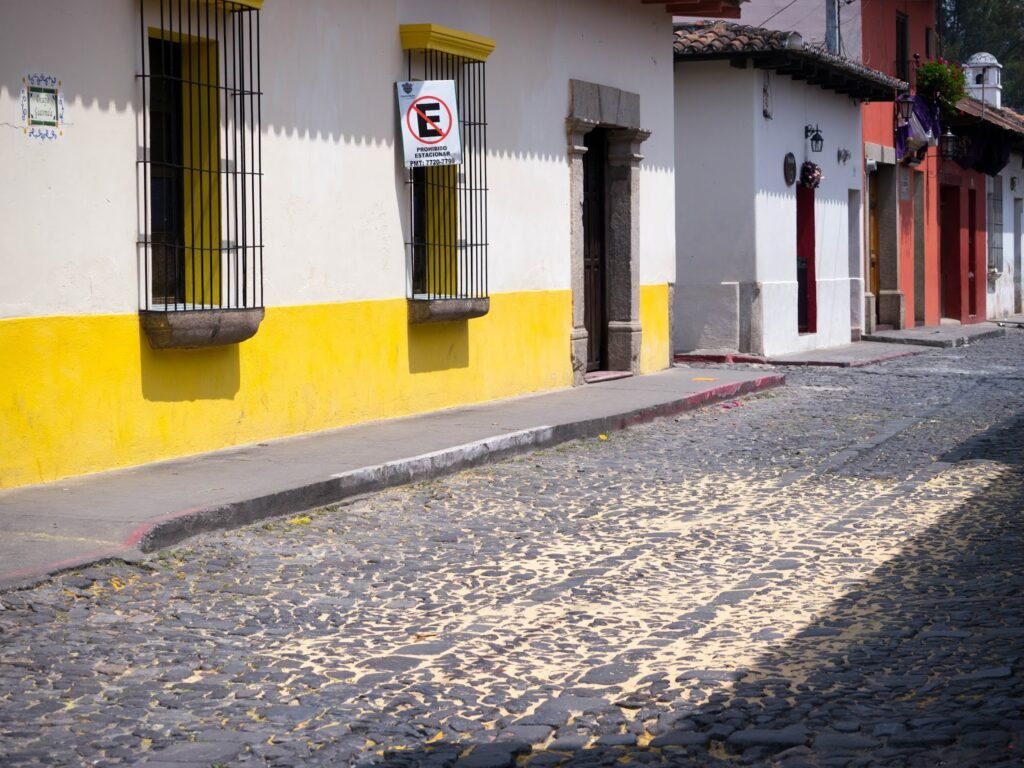
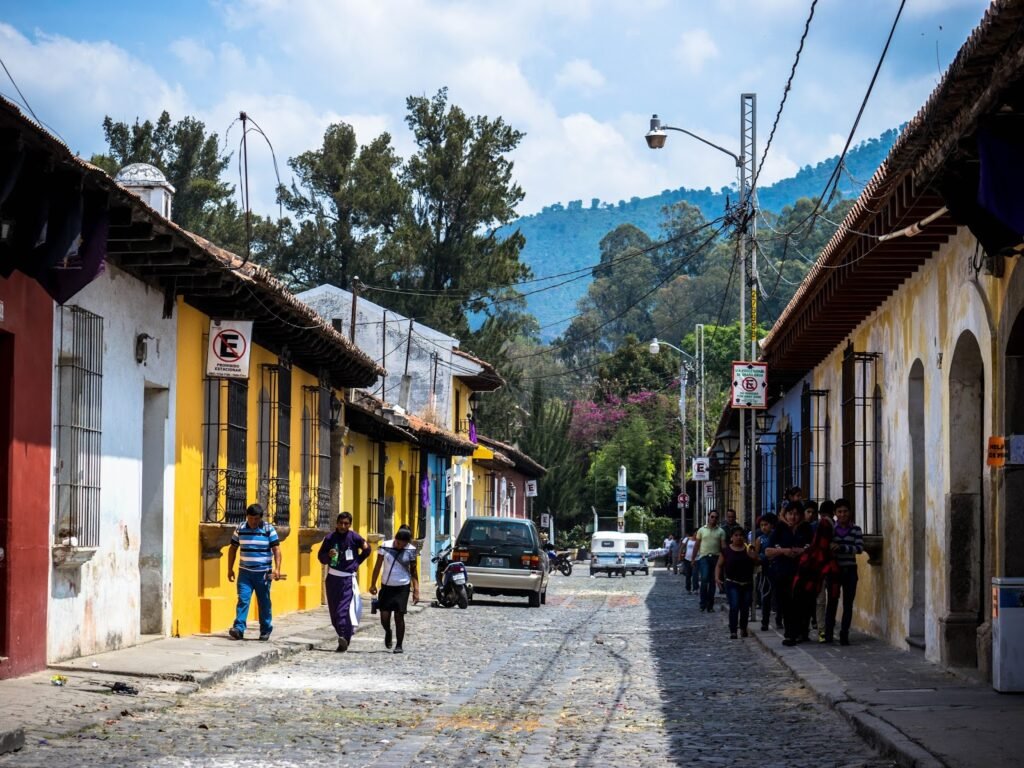
Every alfombra is truly a labor of love and special in its own way. And beyond doubt, it is a profound experience to feel the story of the passion together.
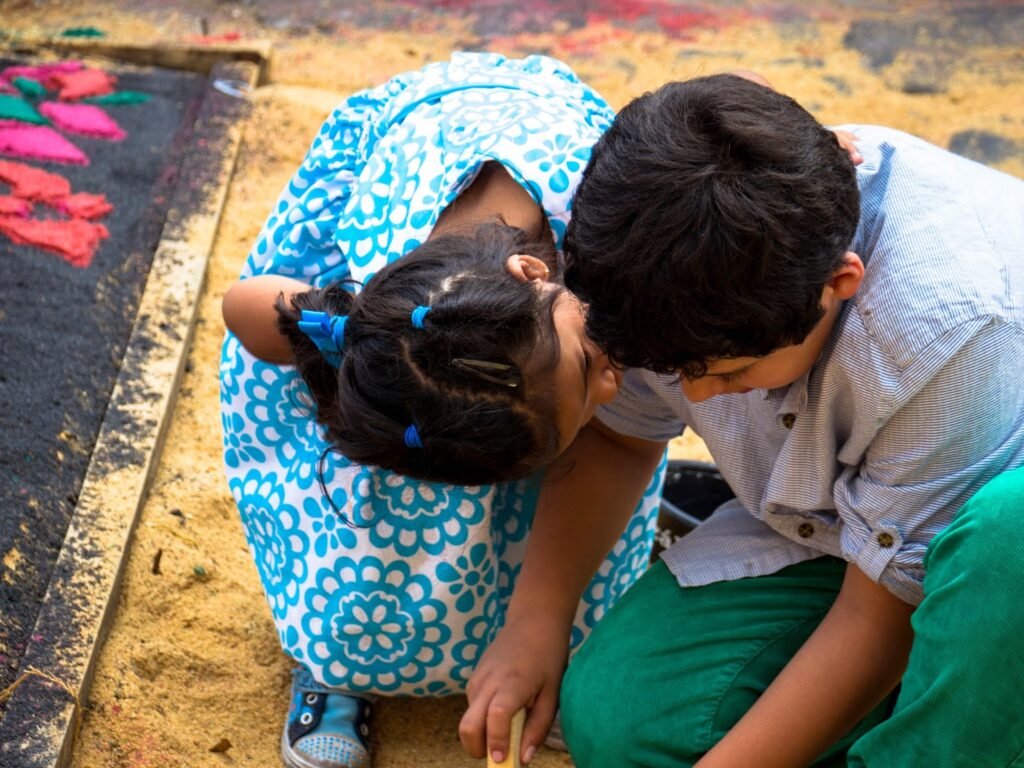

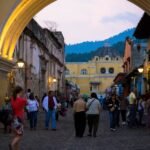



Amazing! Thanks for sharing!
Glad you like it, my dear!
Sound great
Indeed it was great 🙂